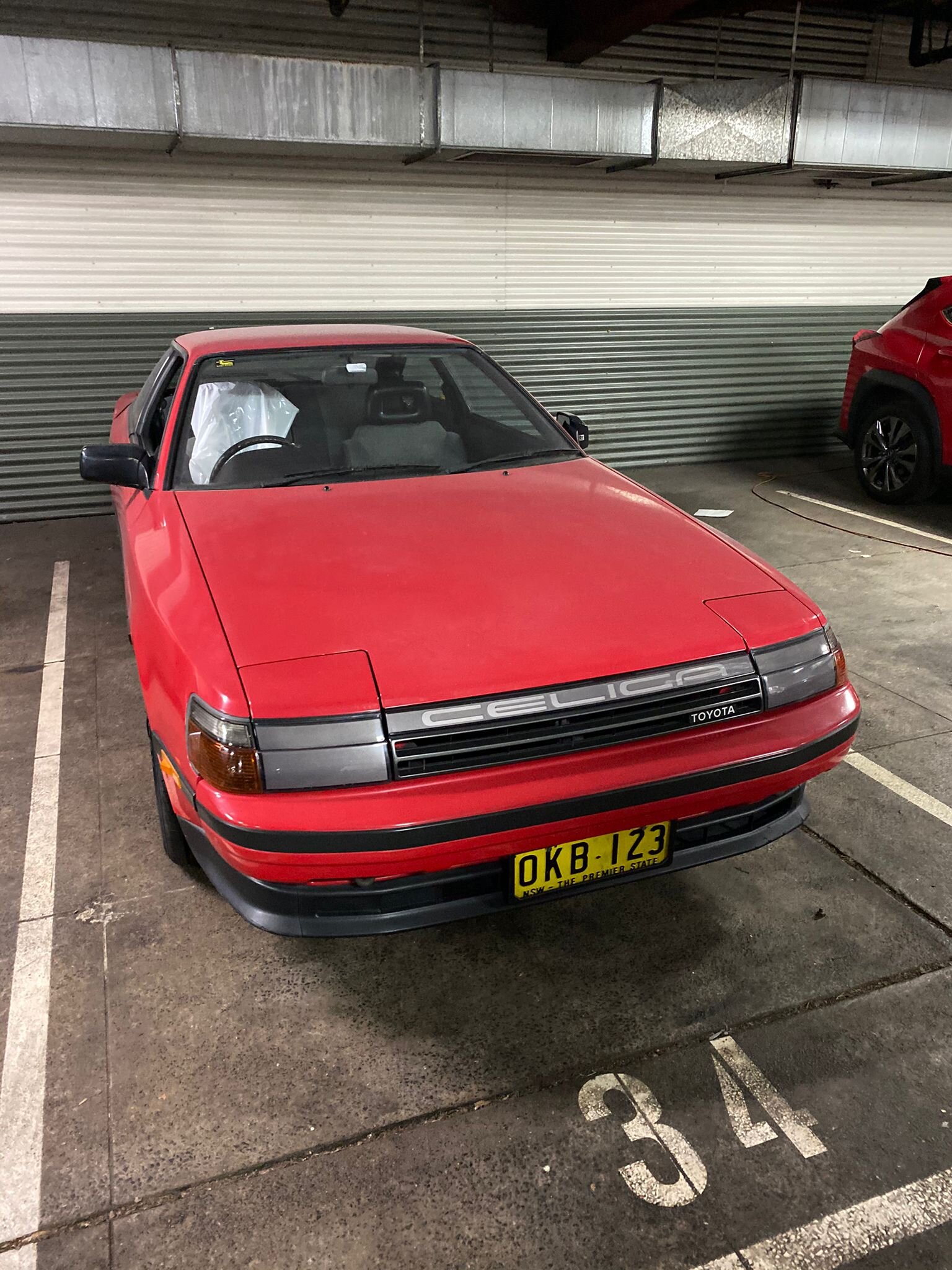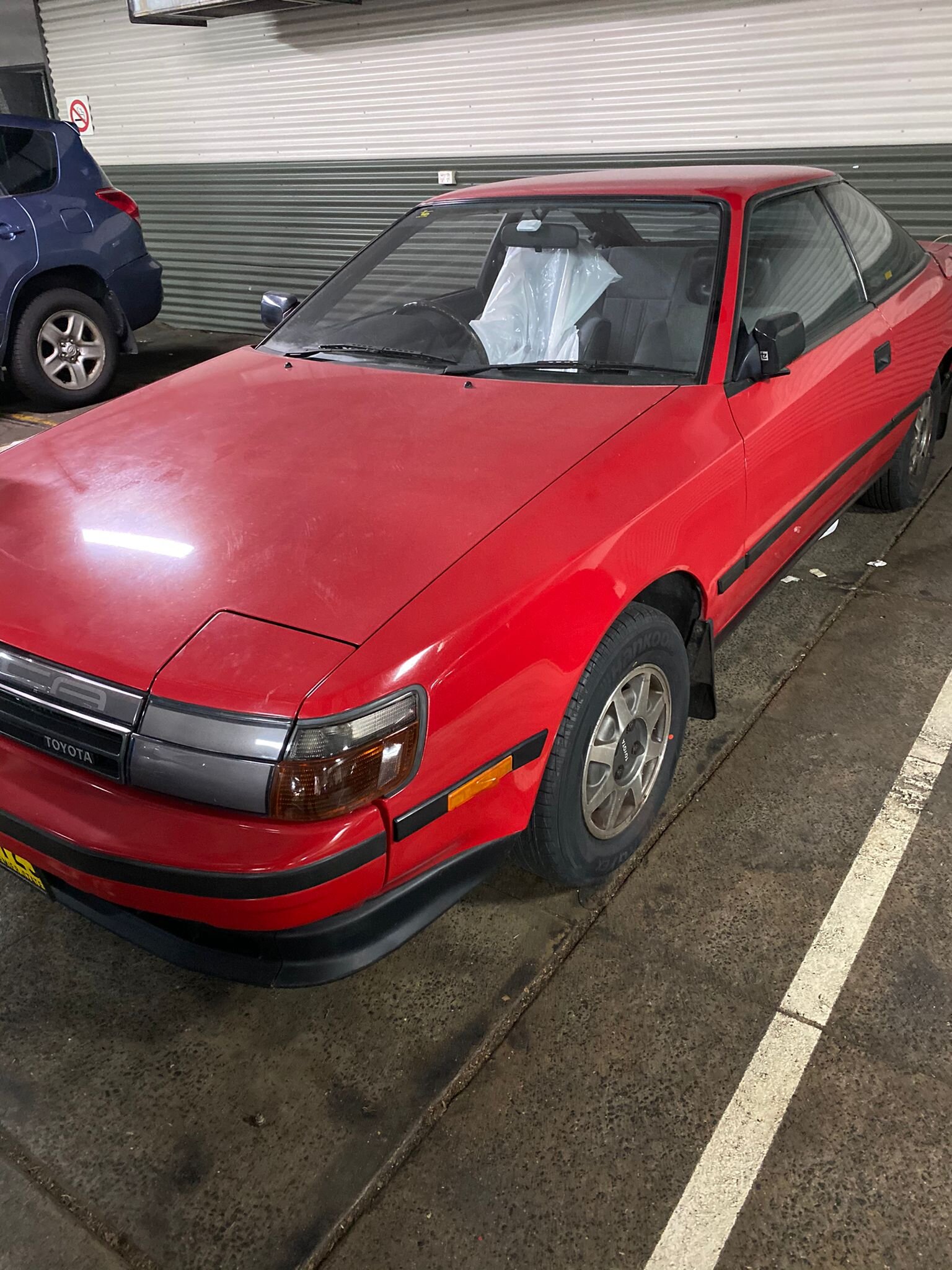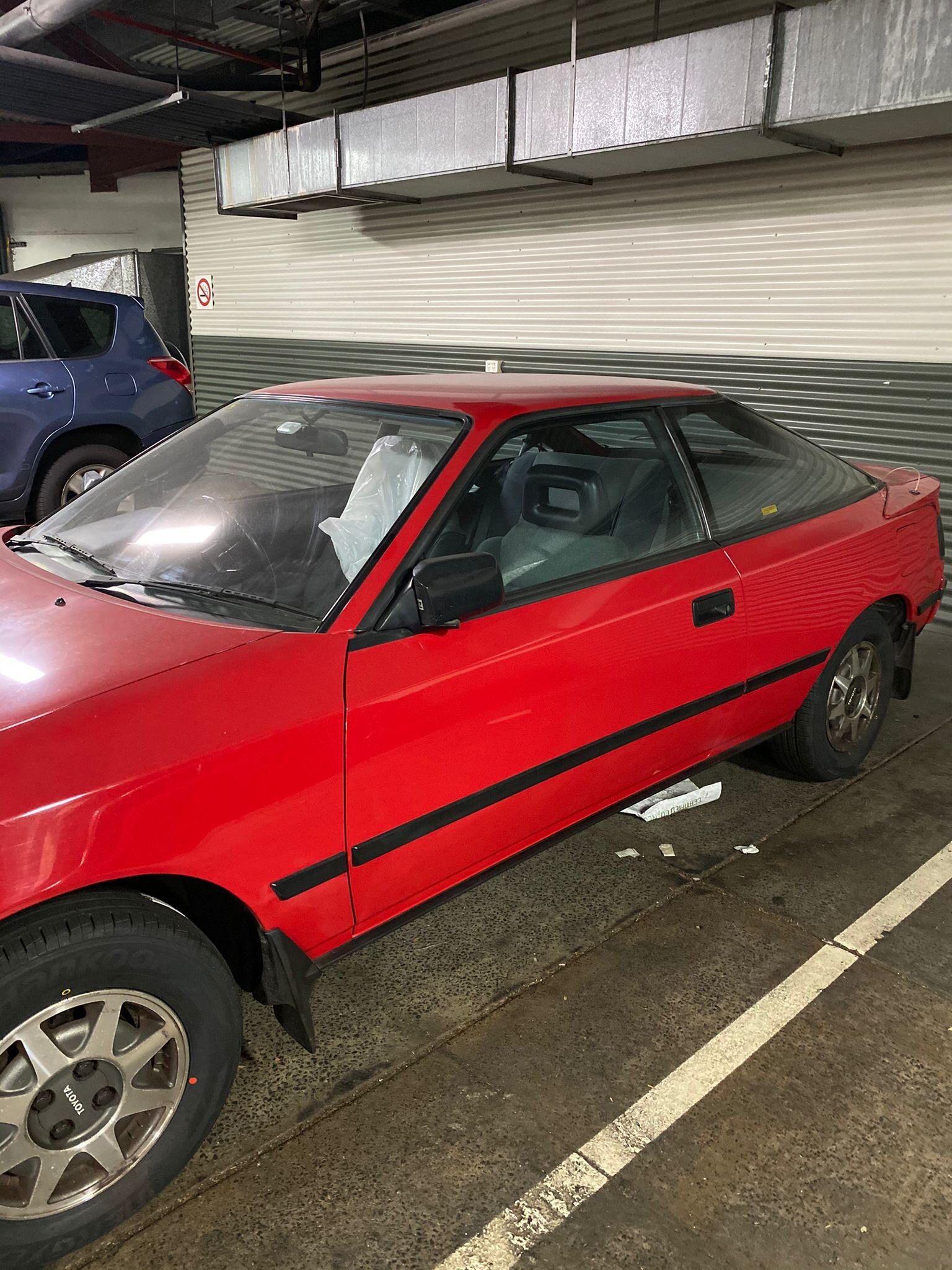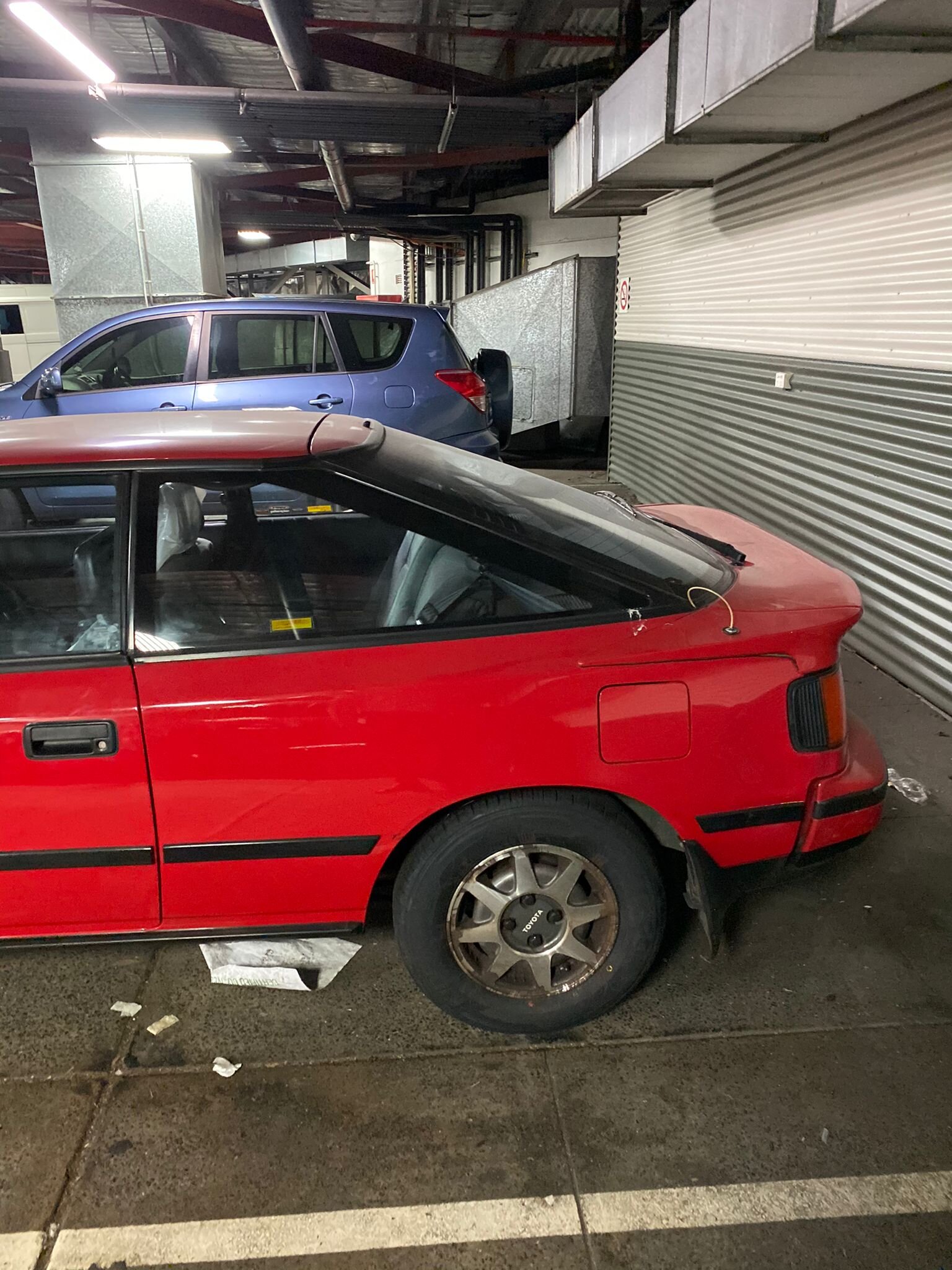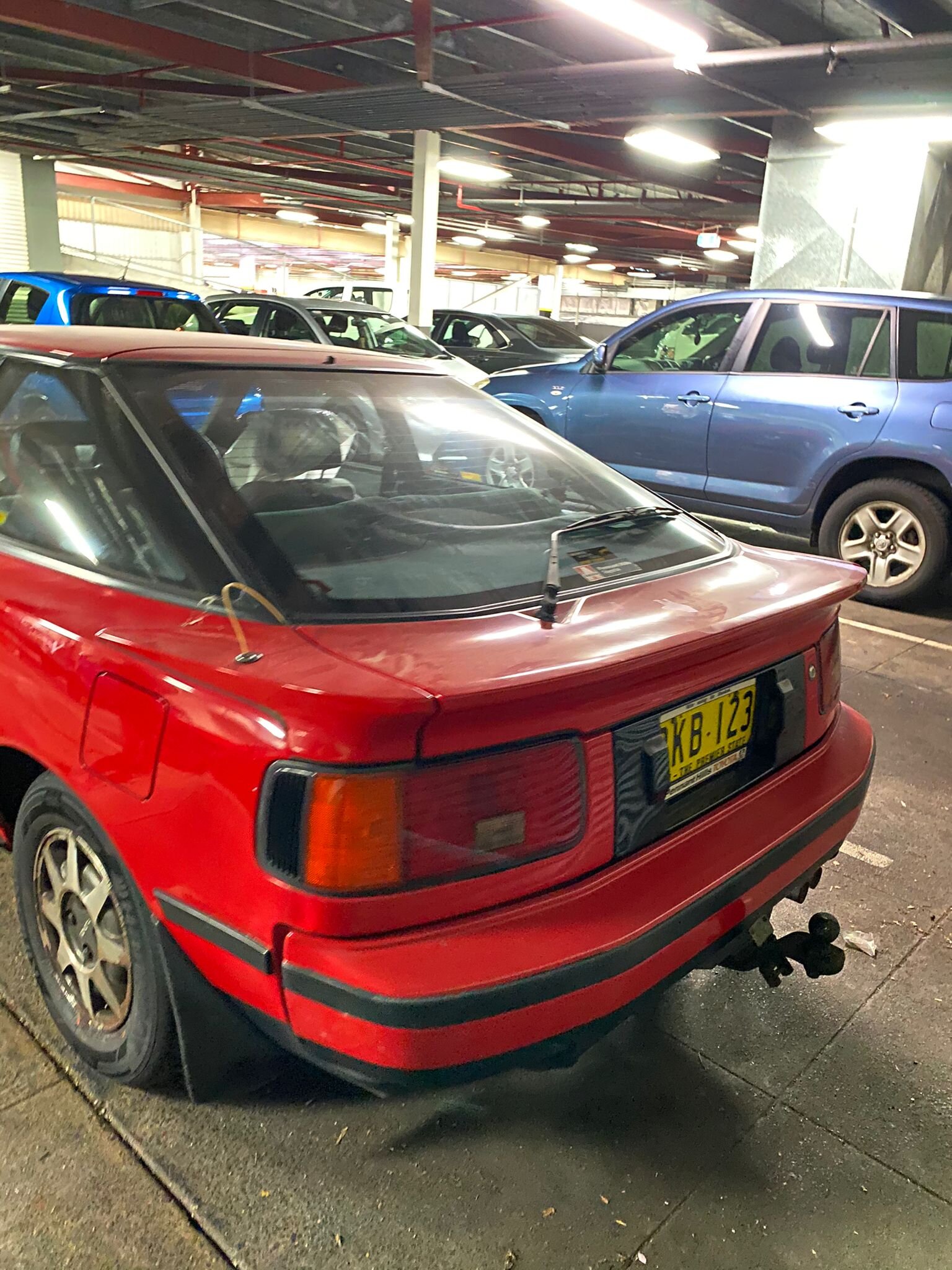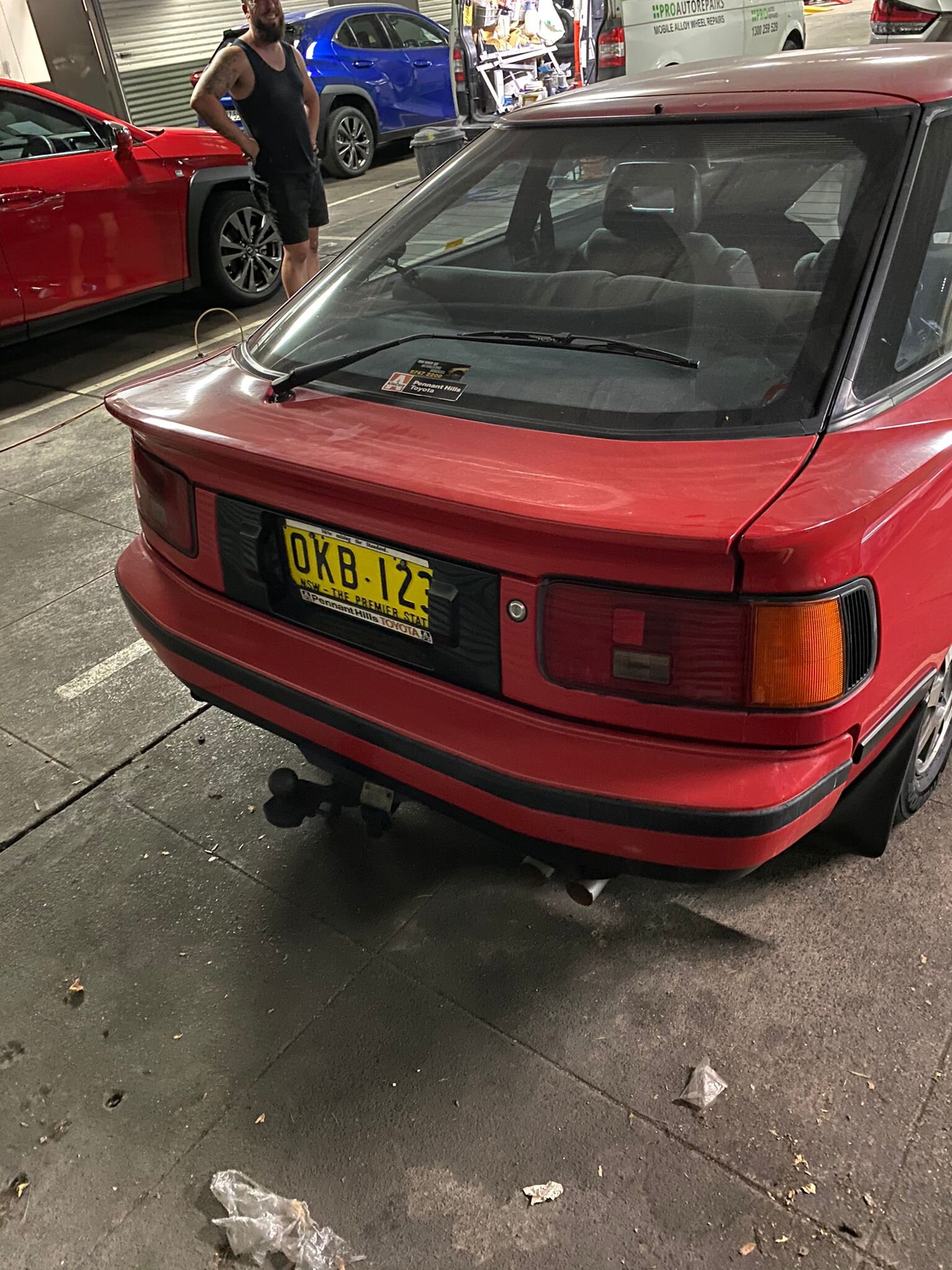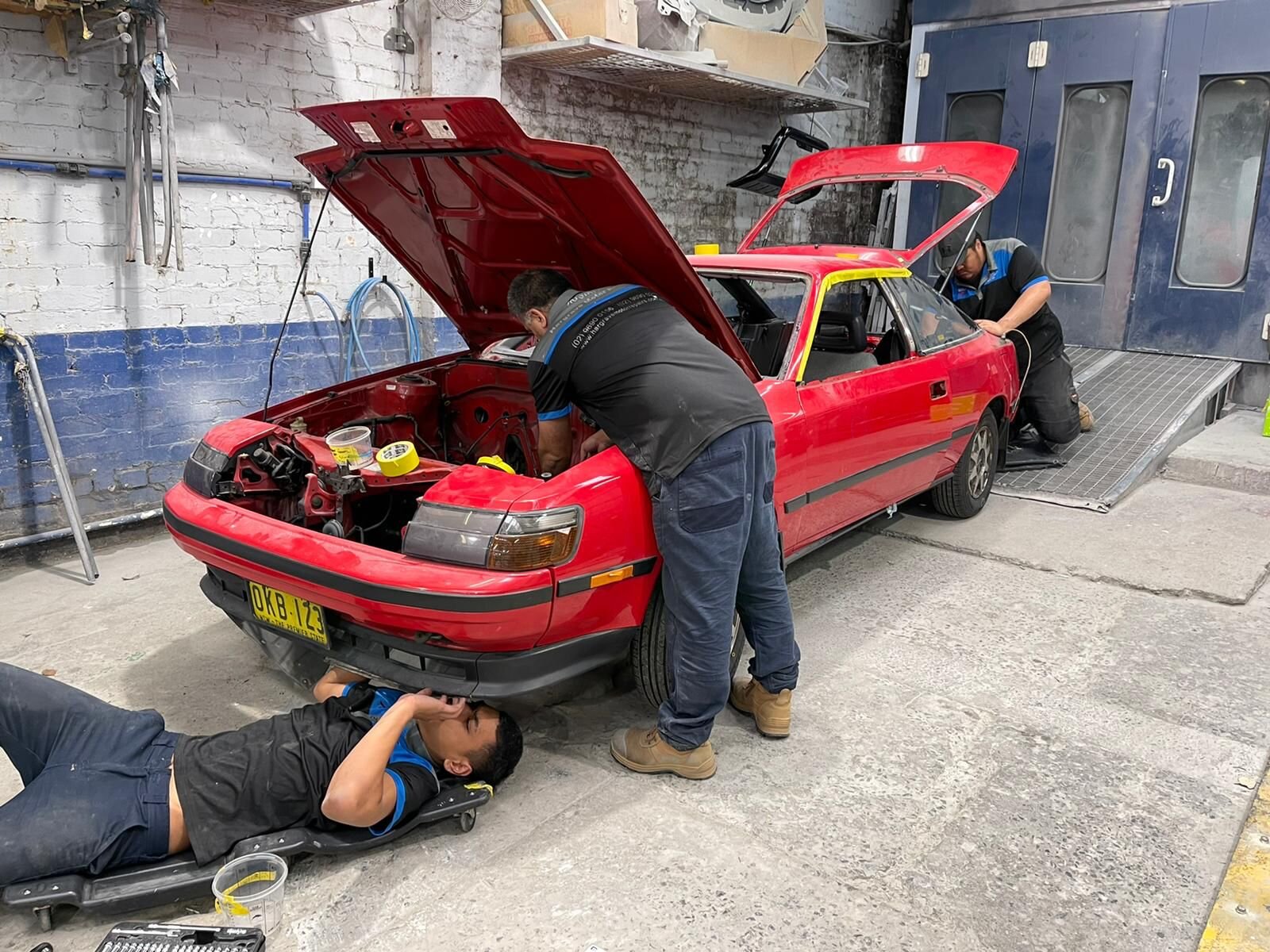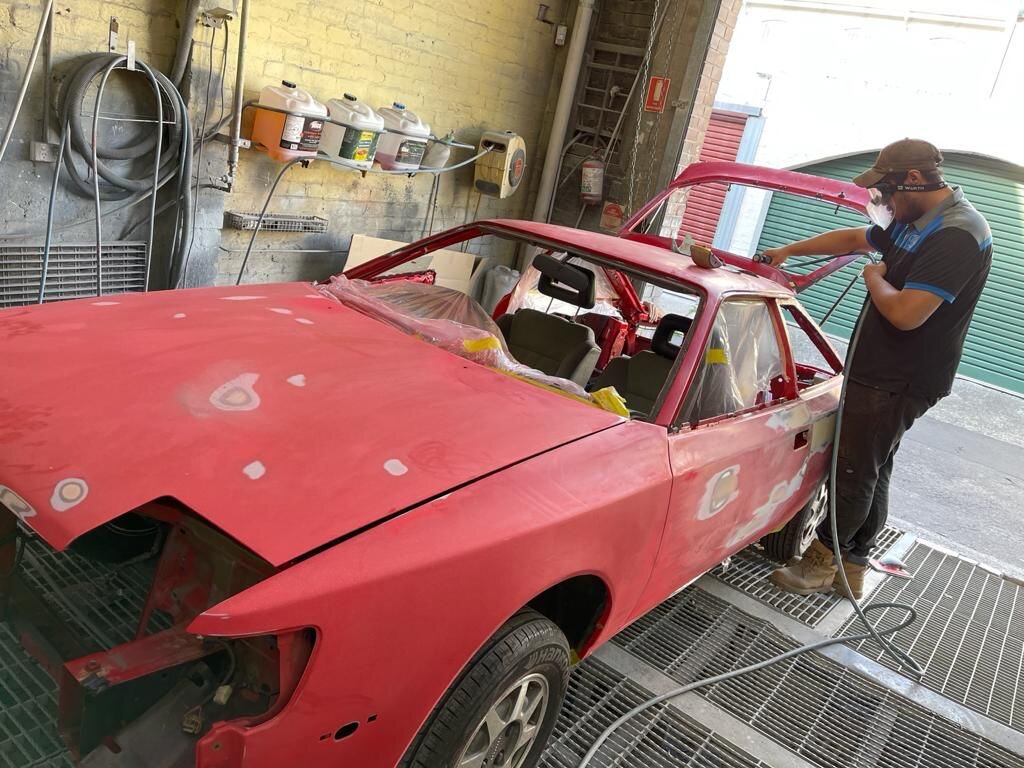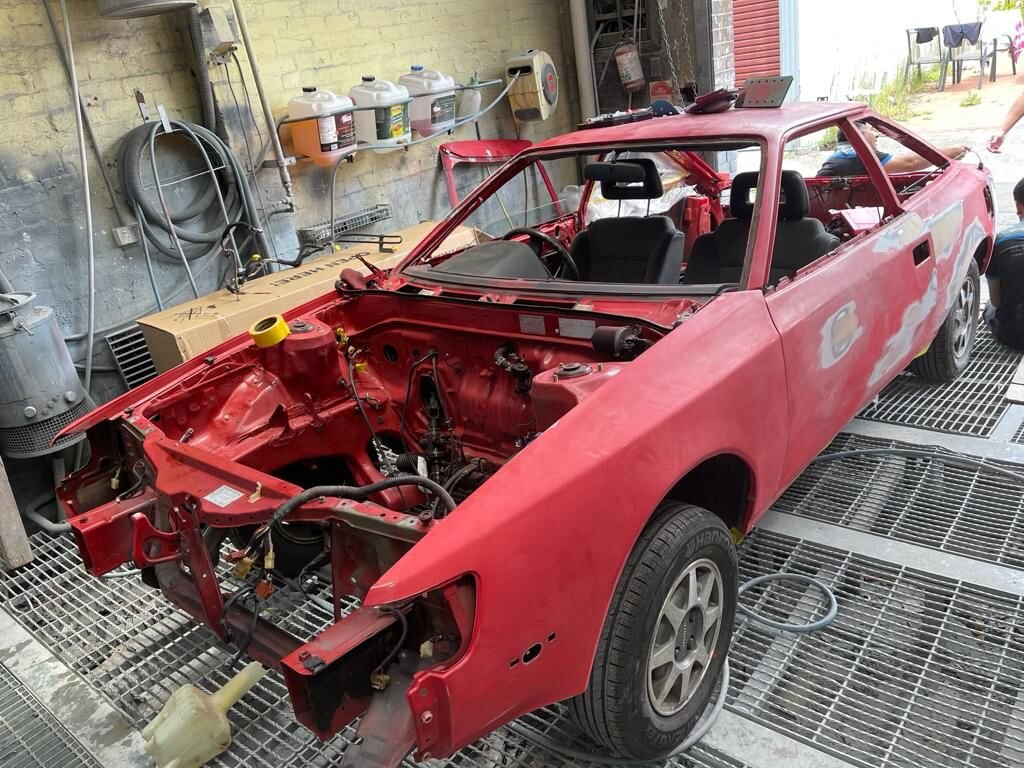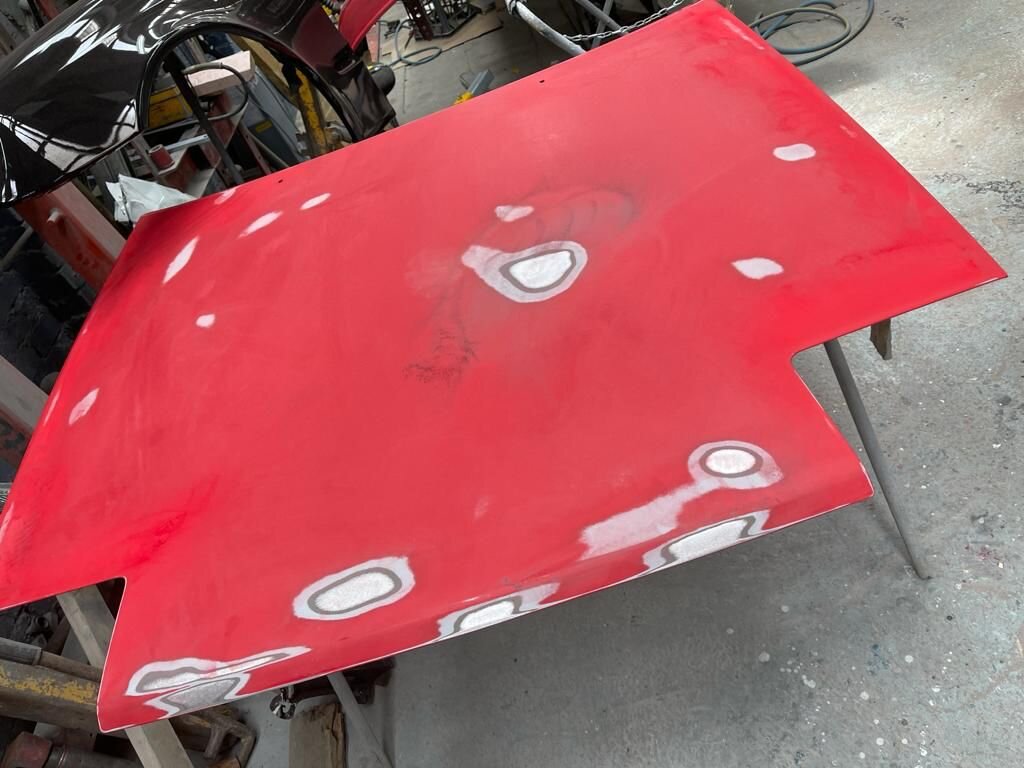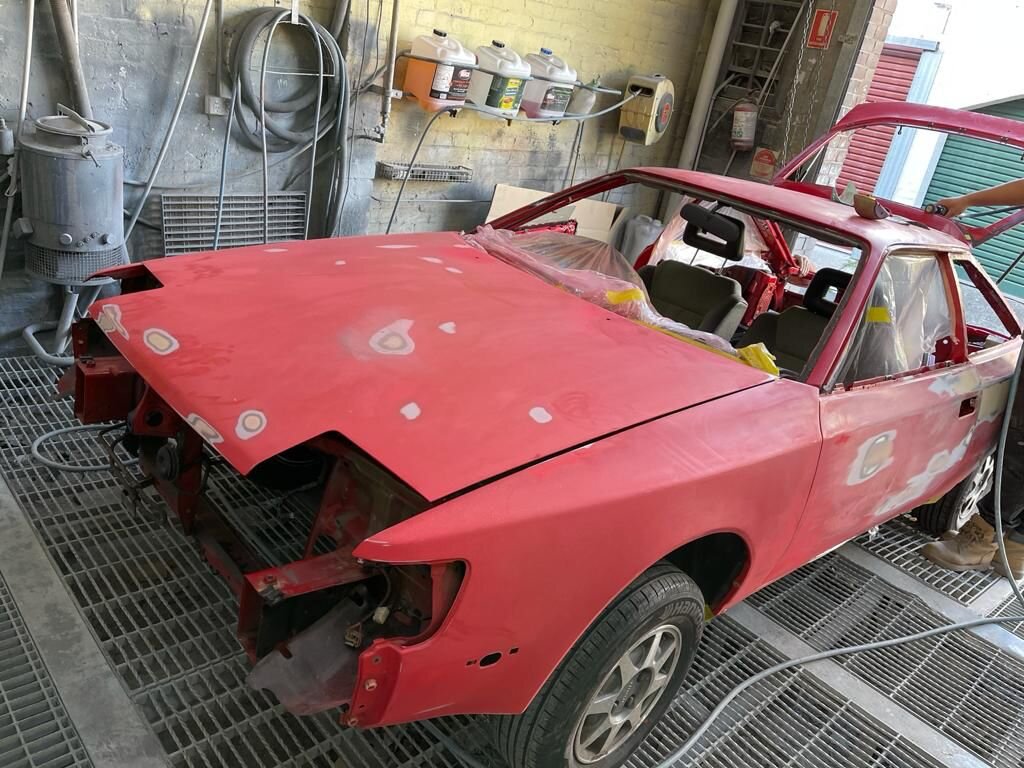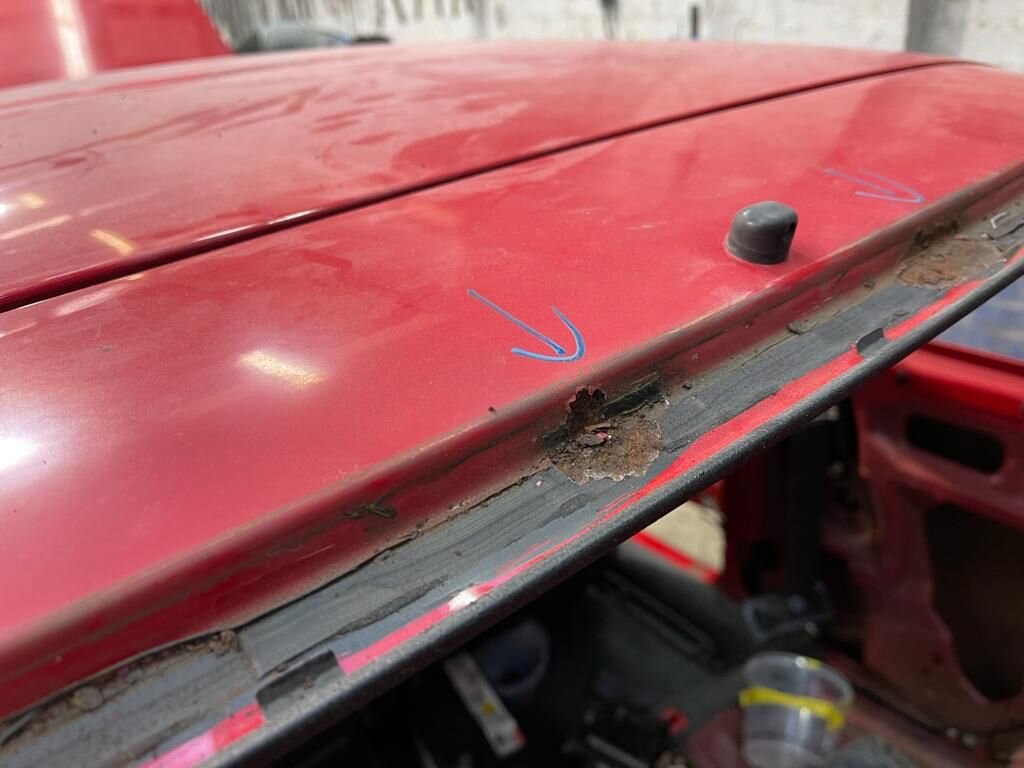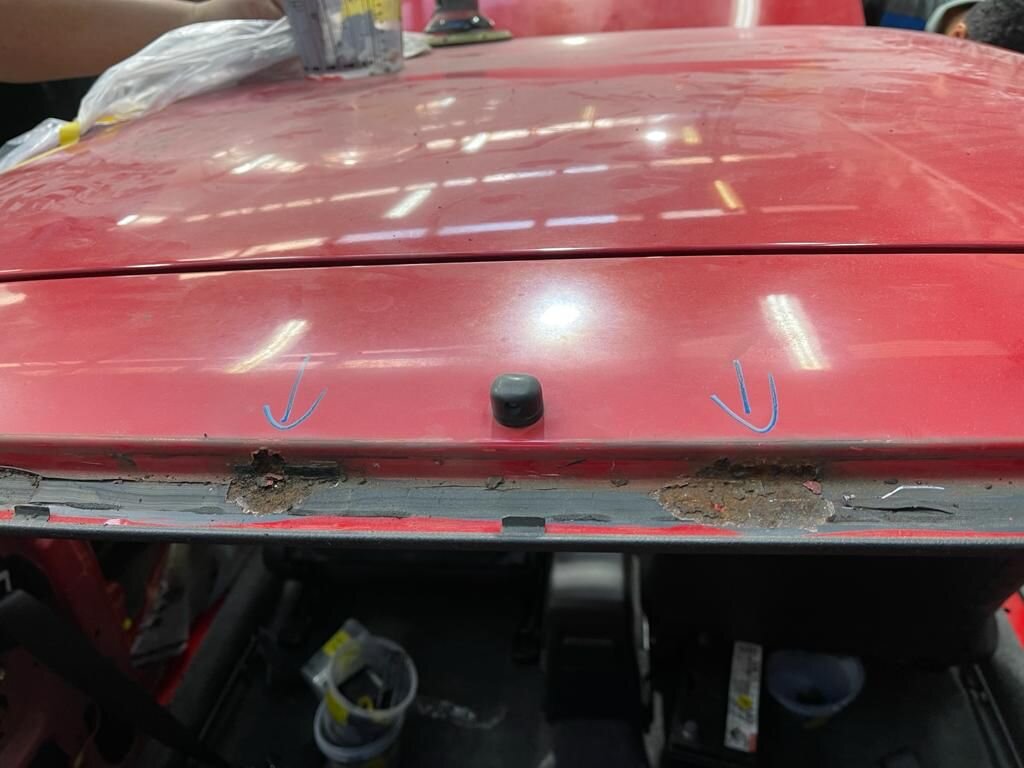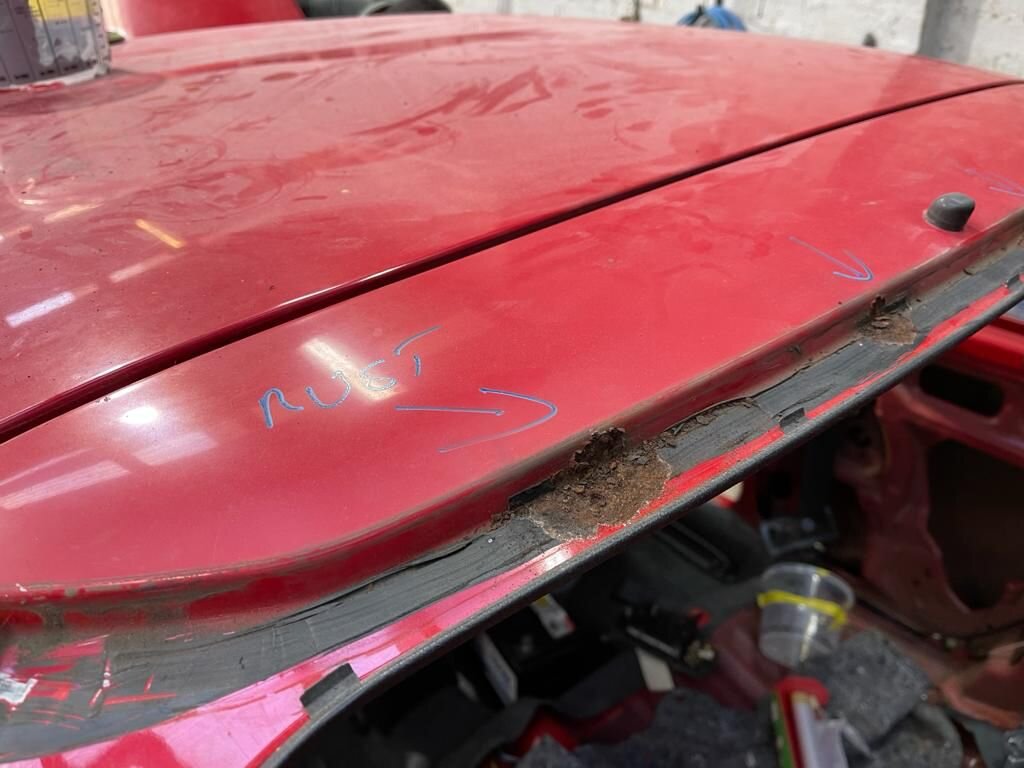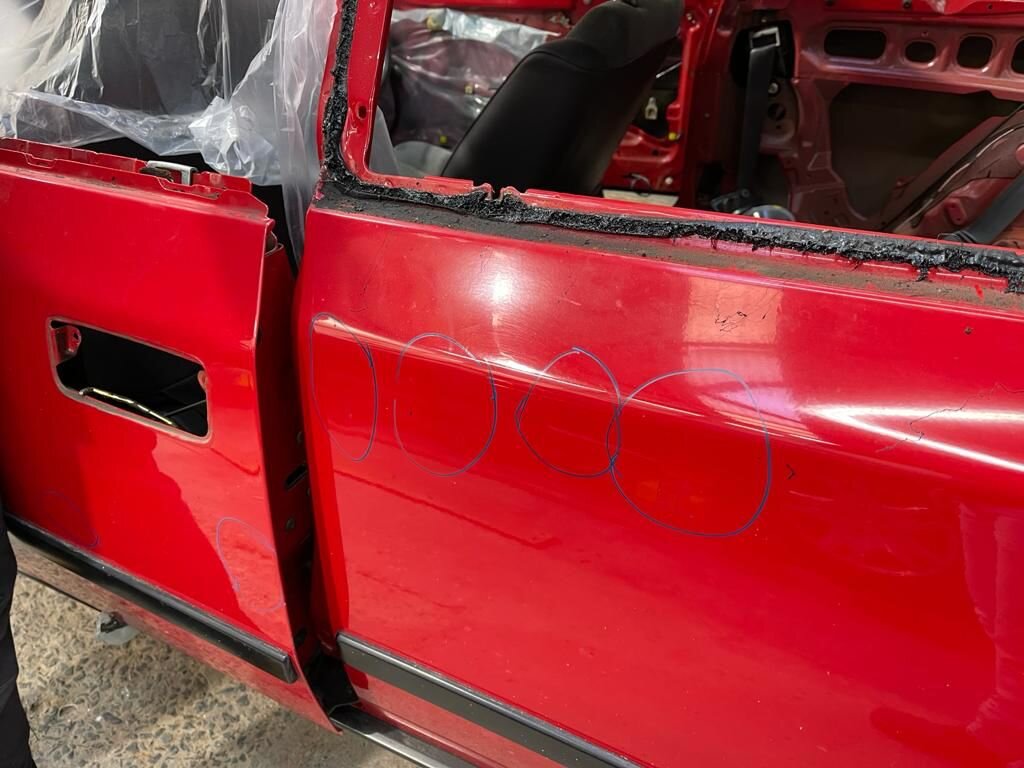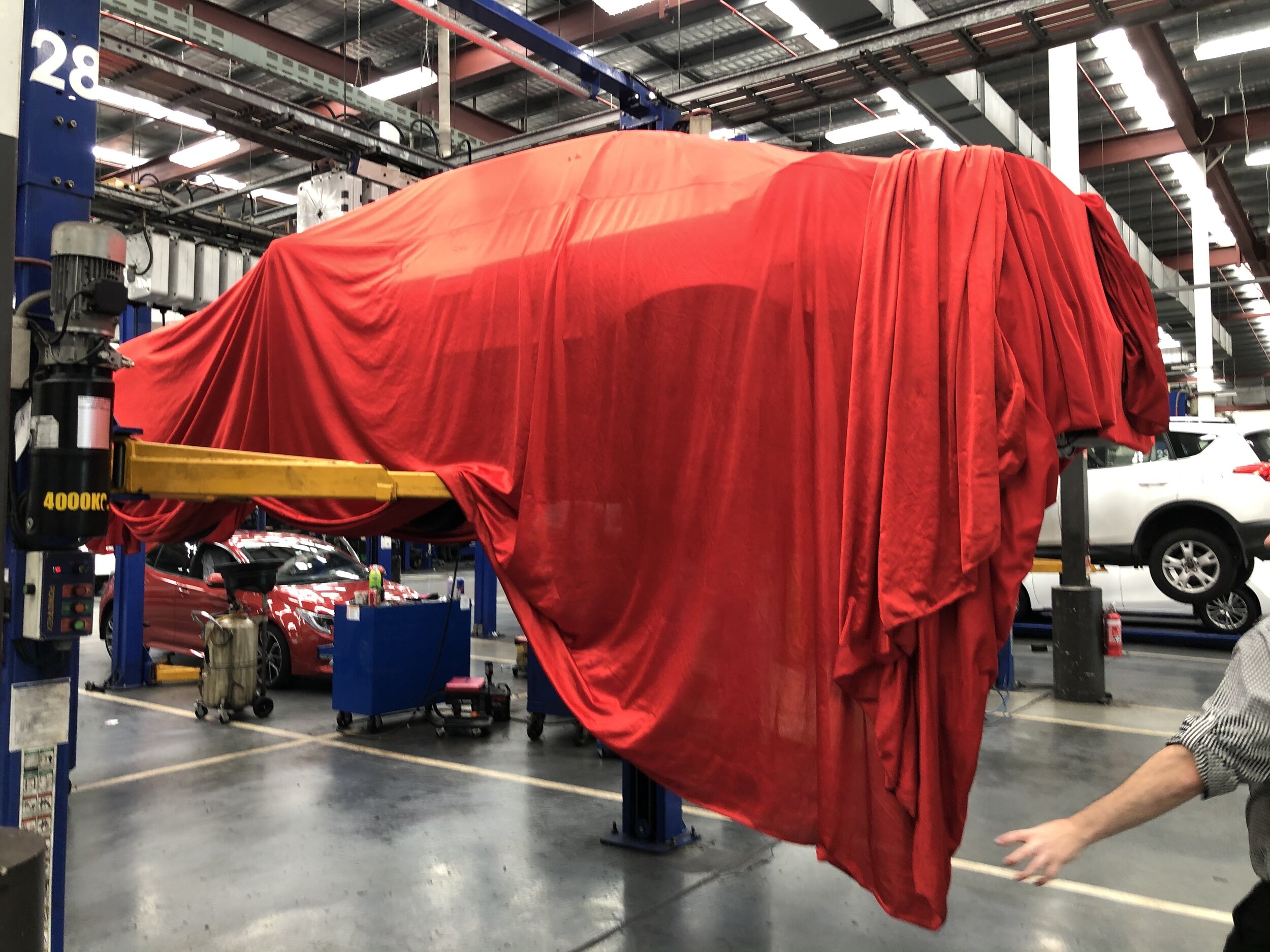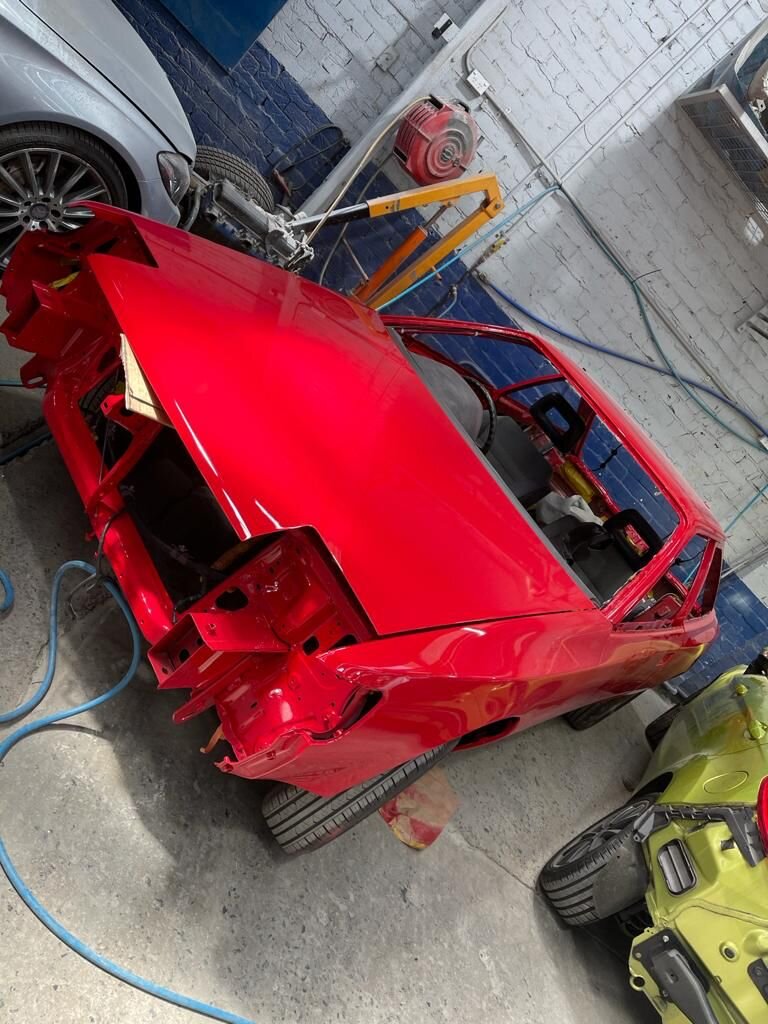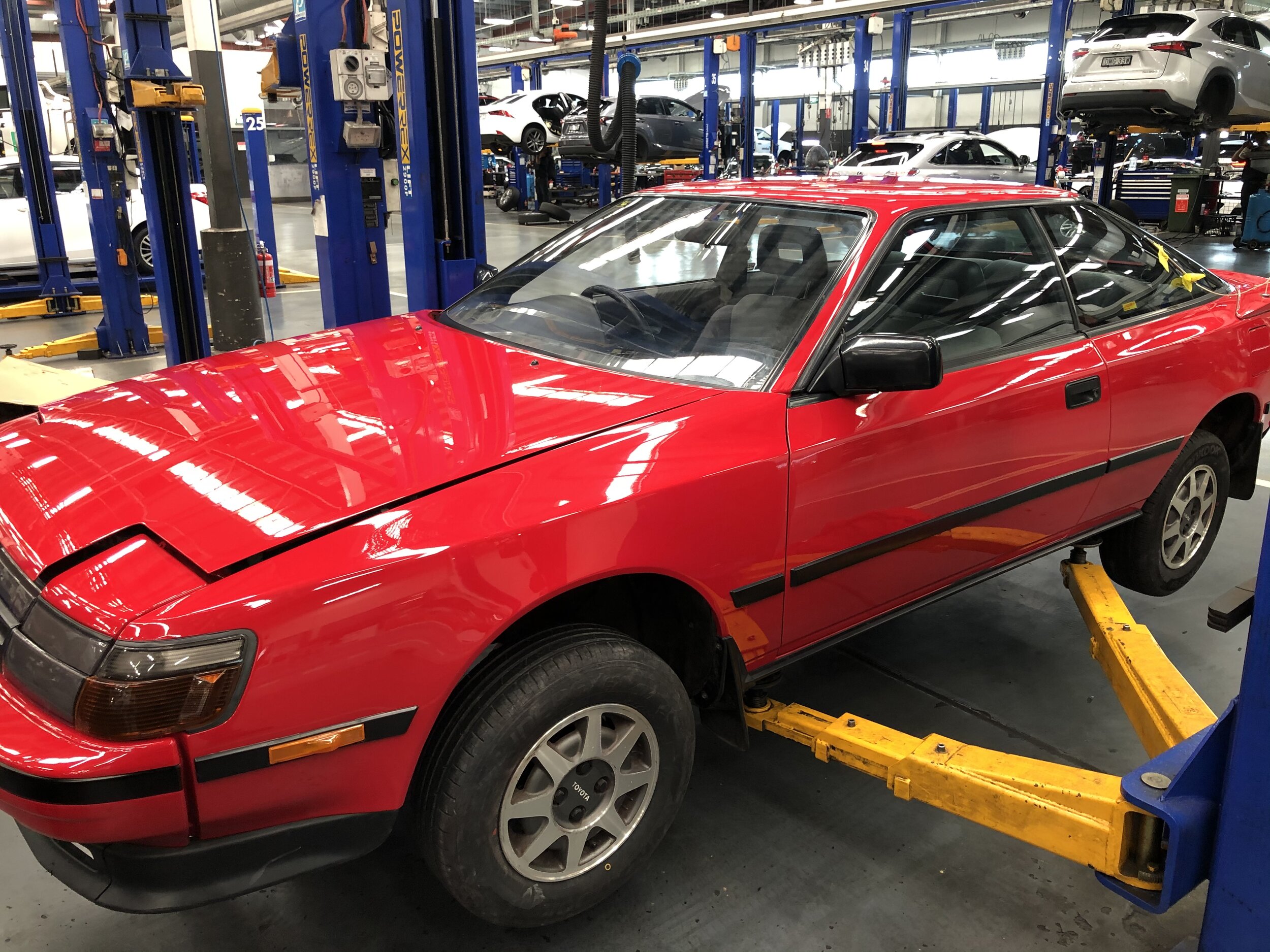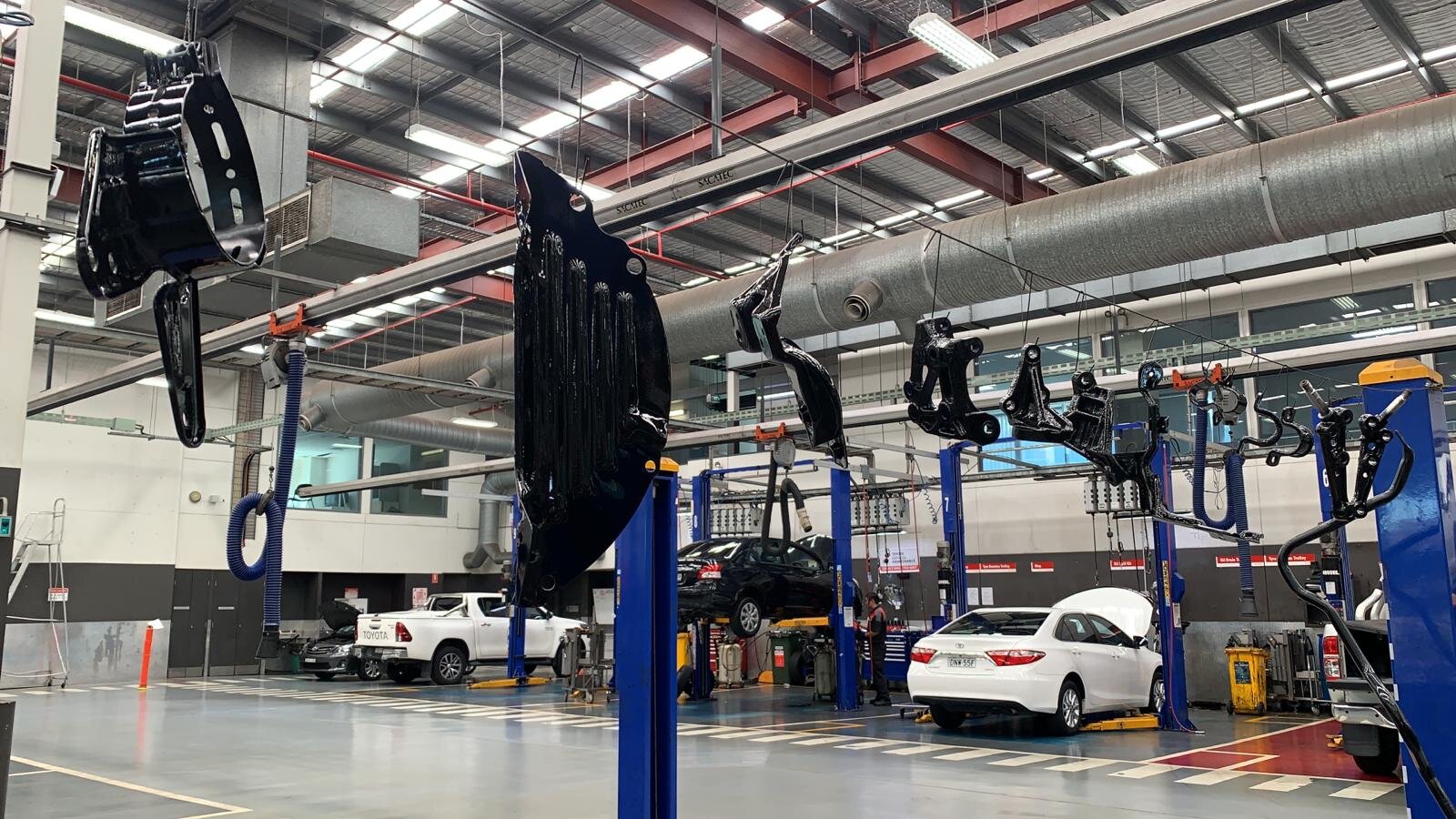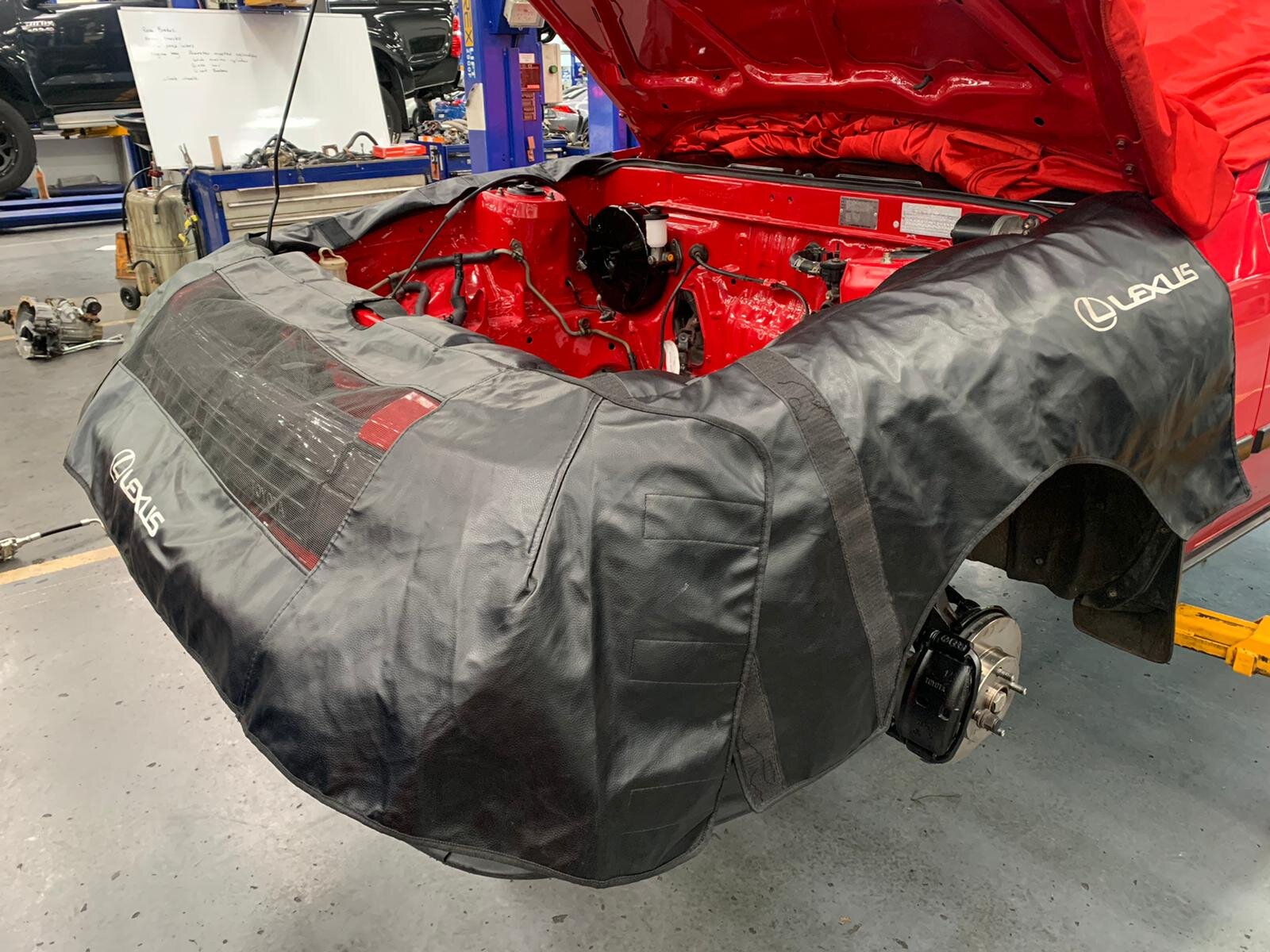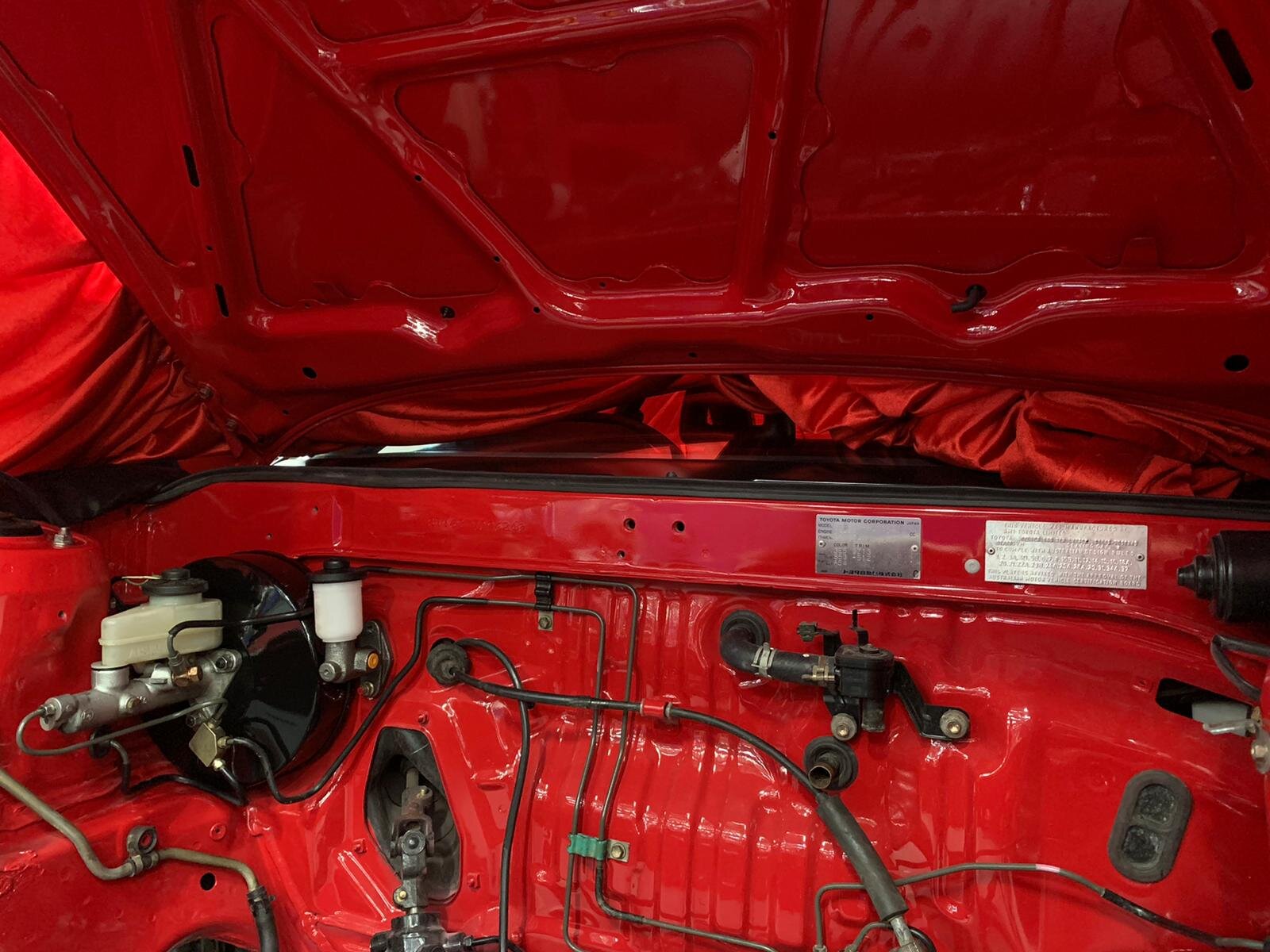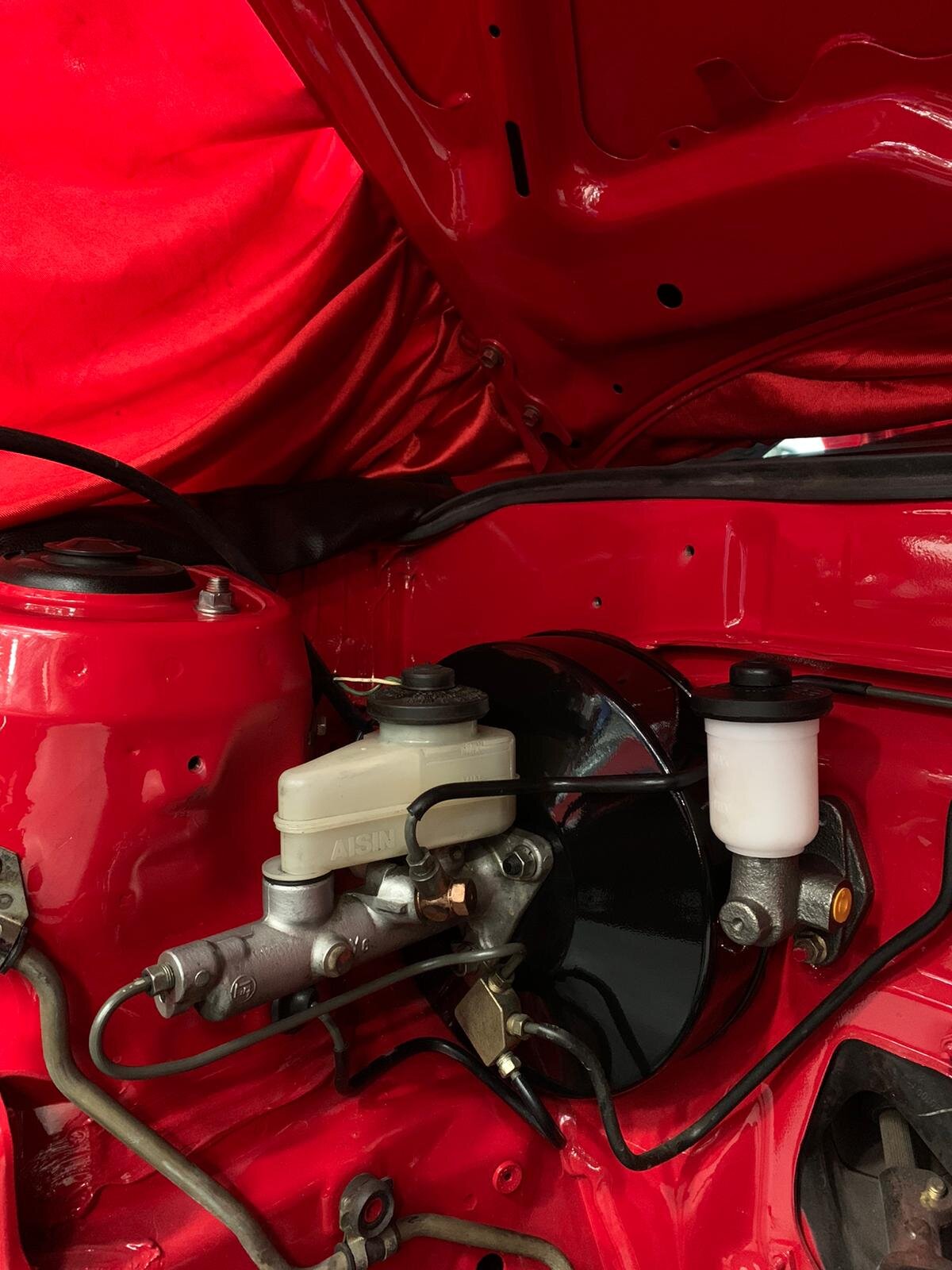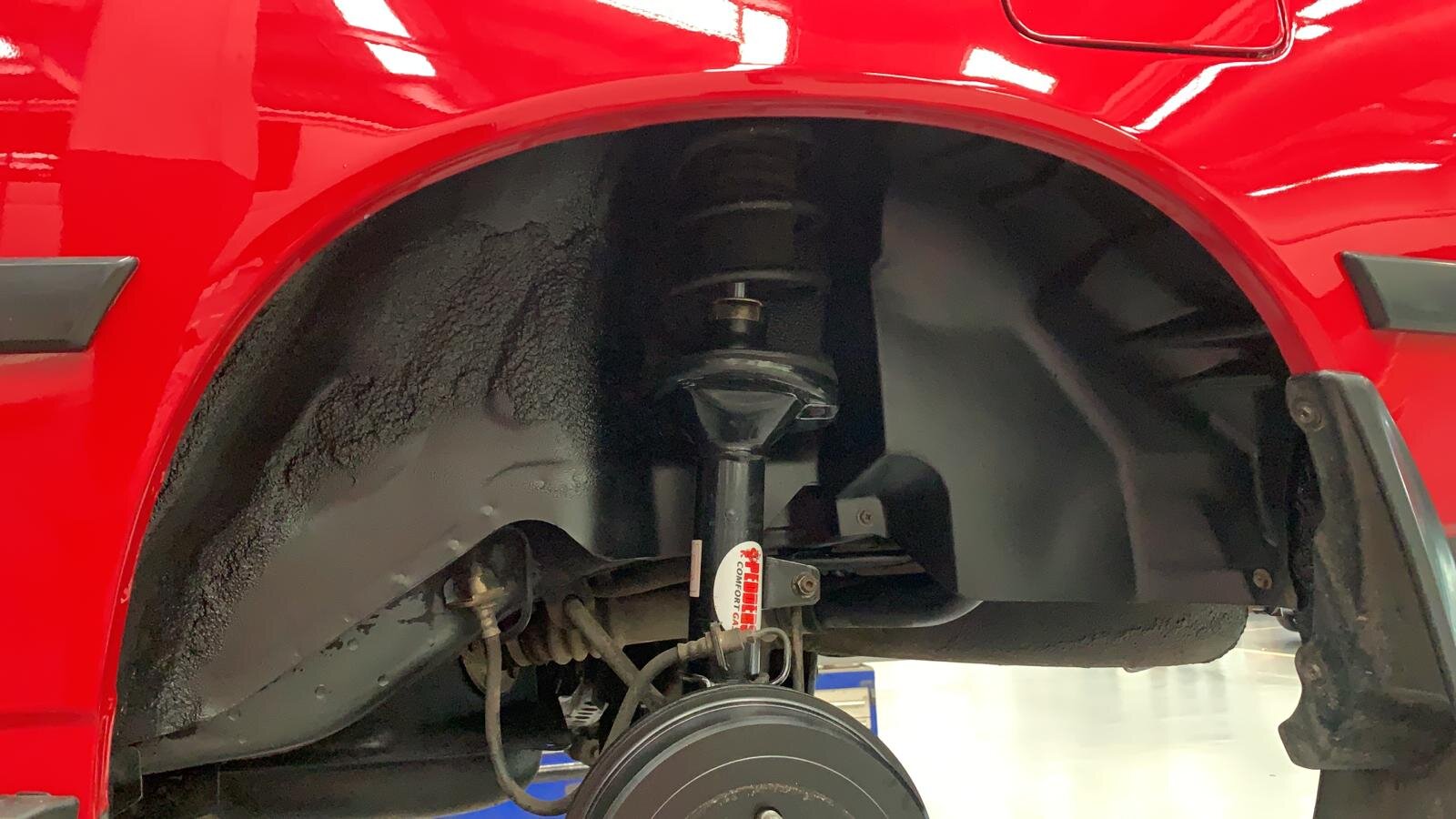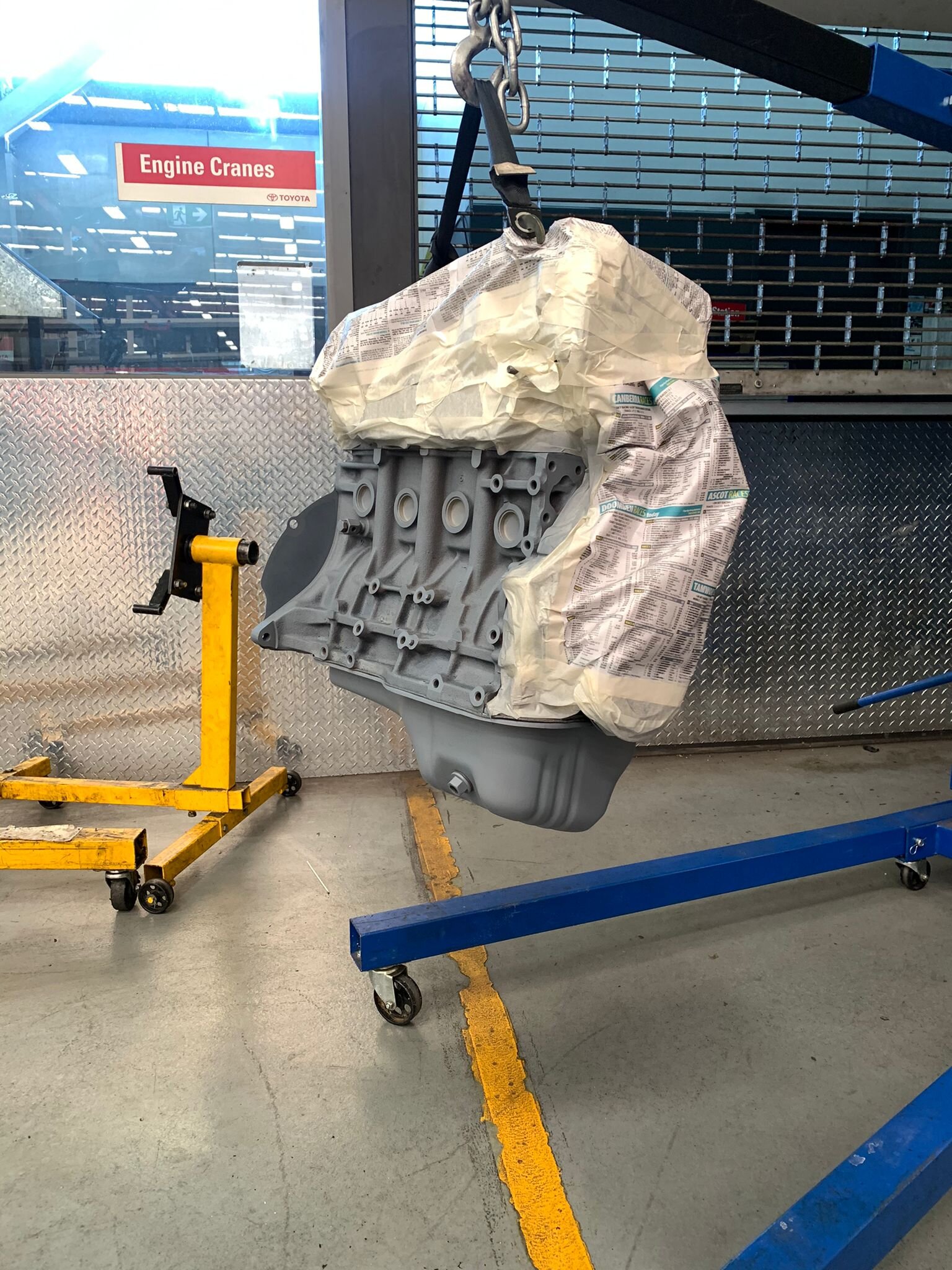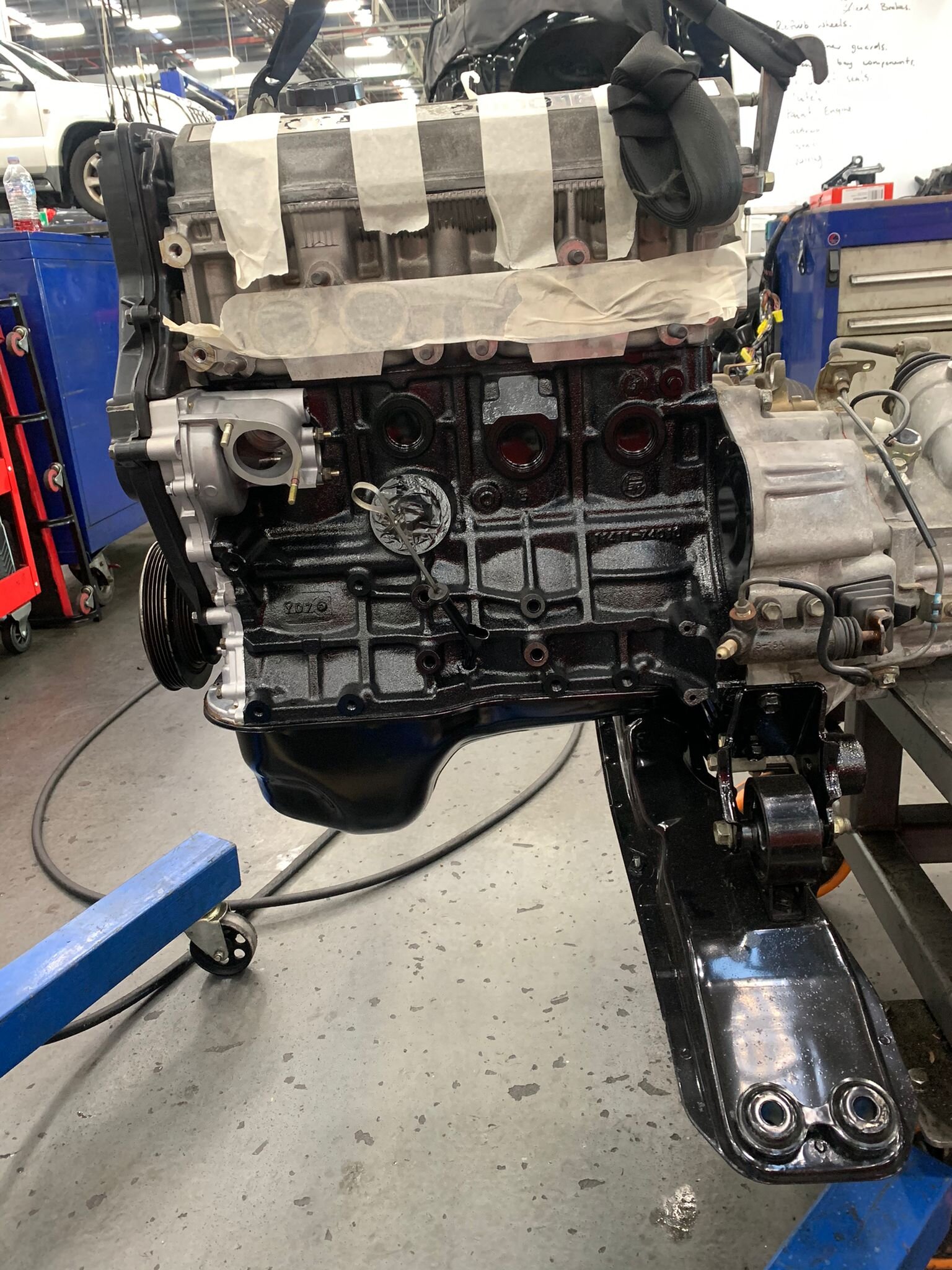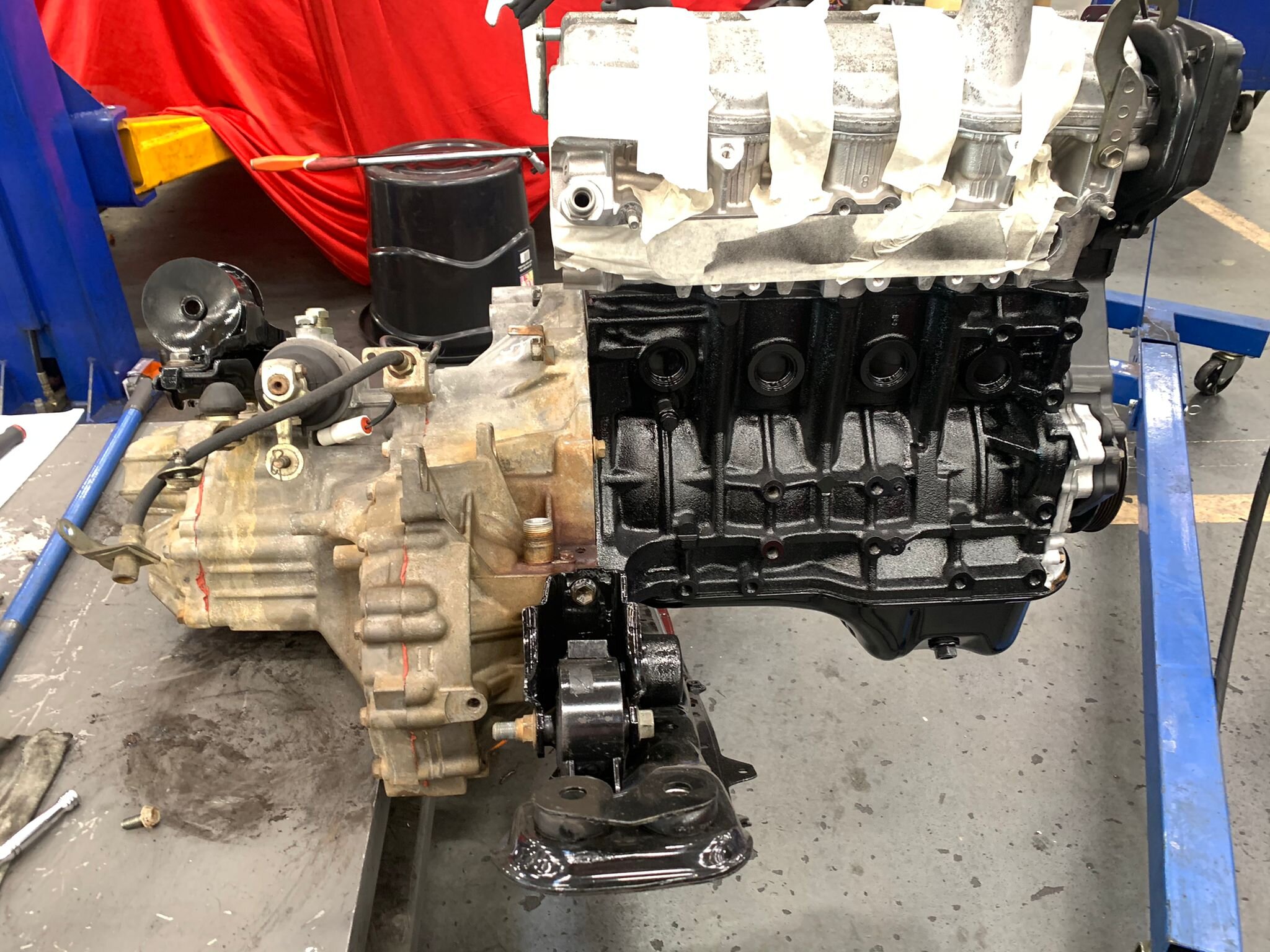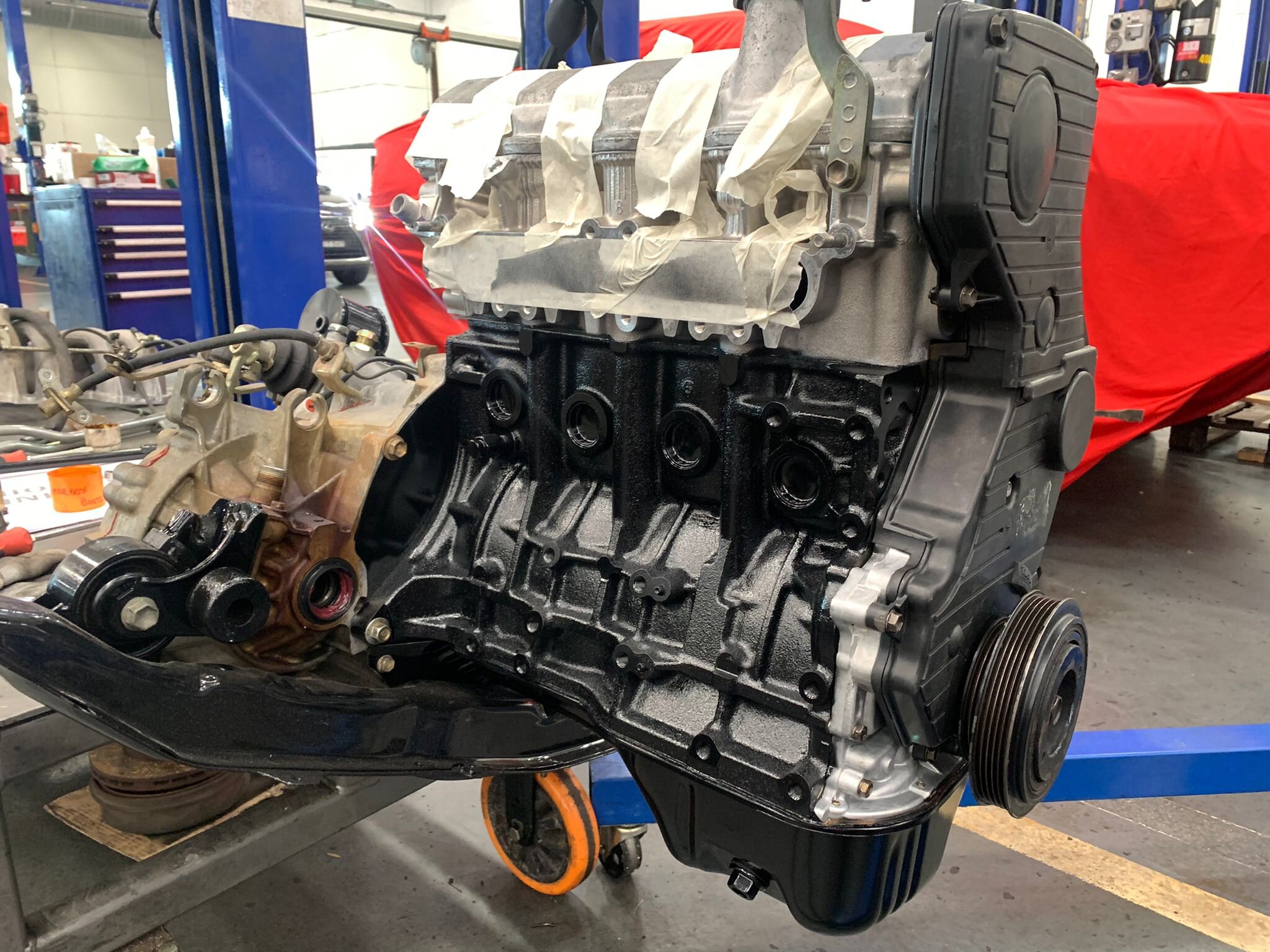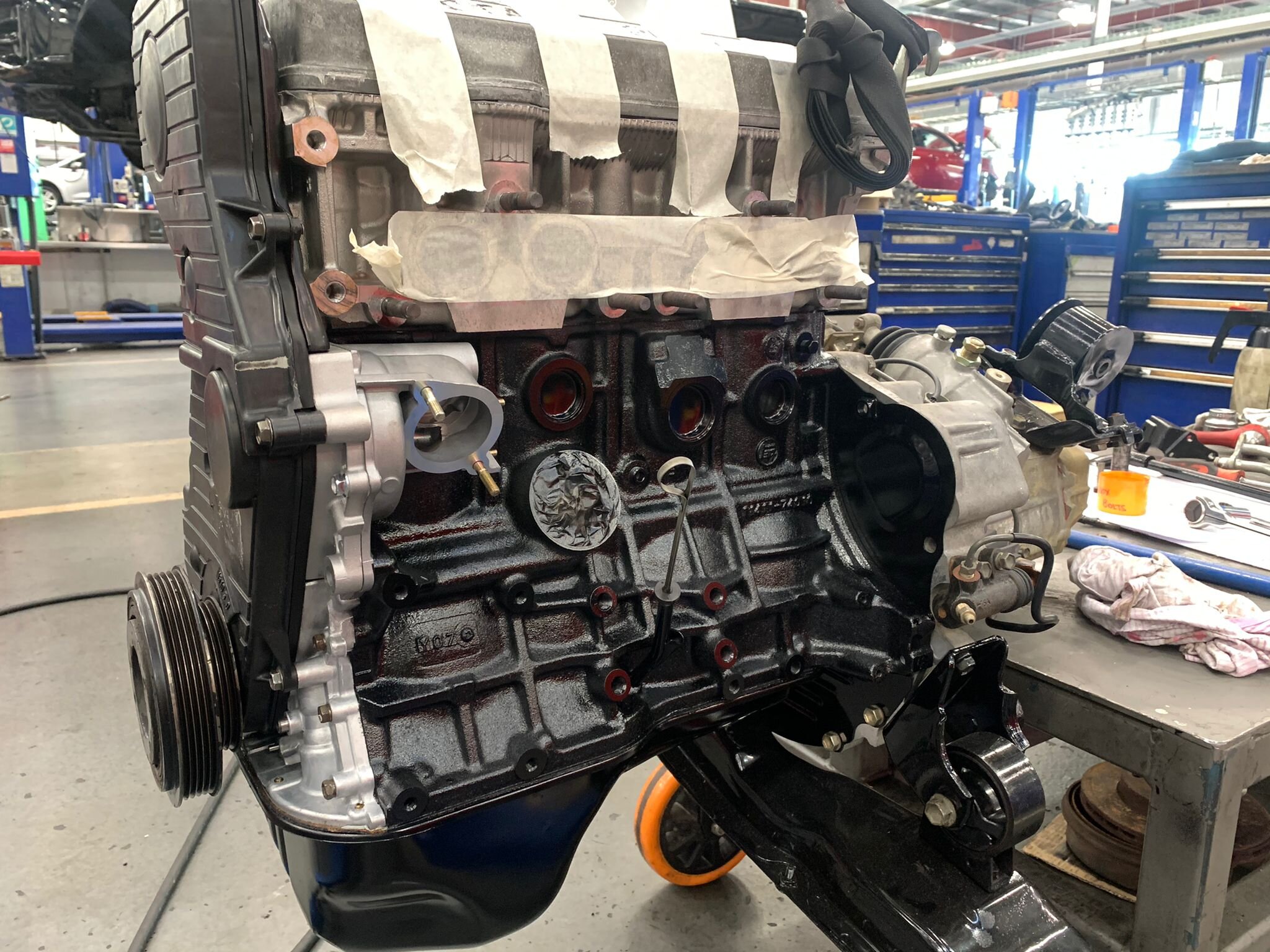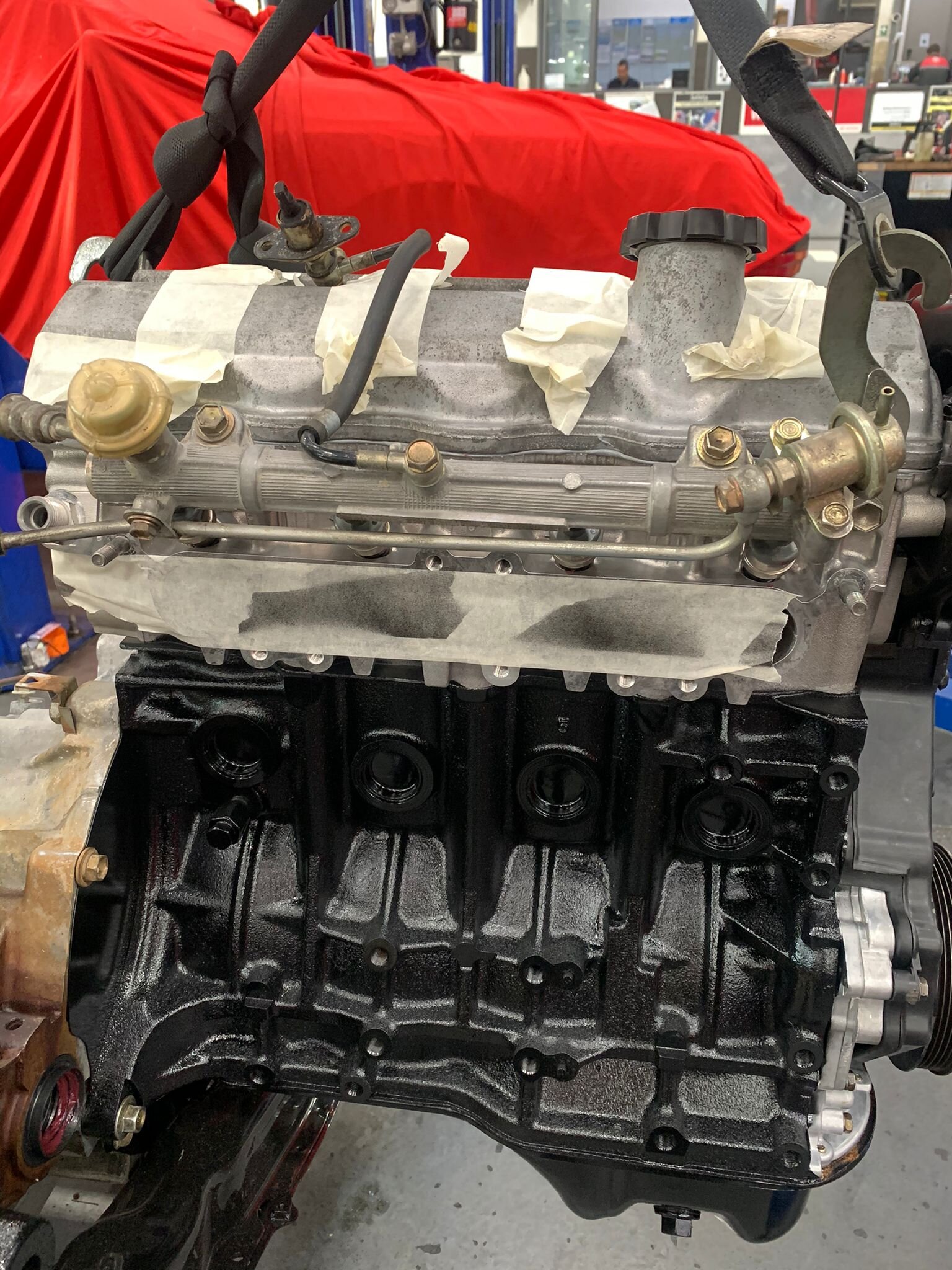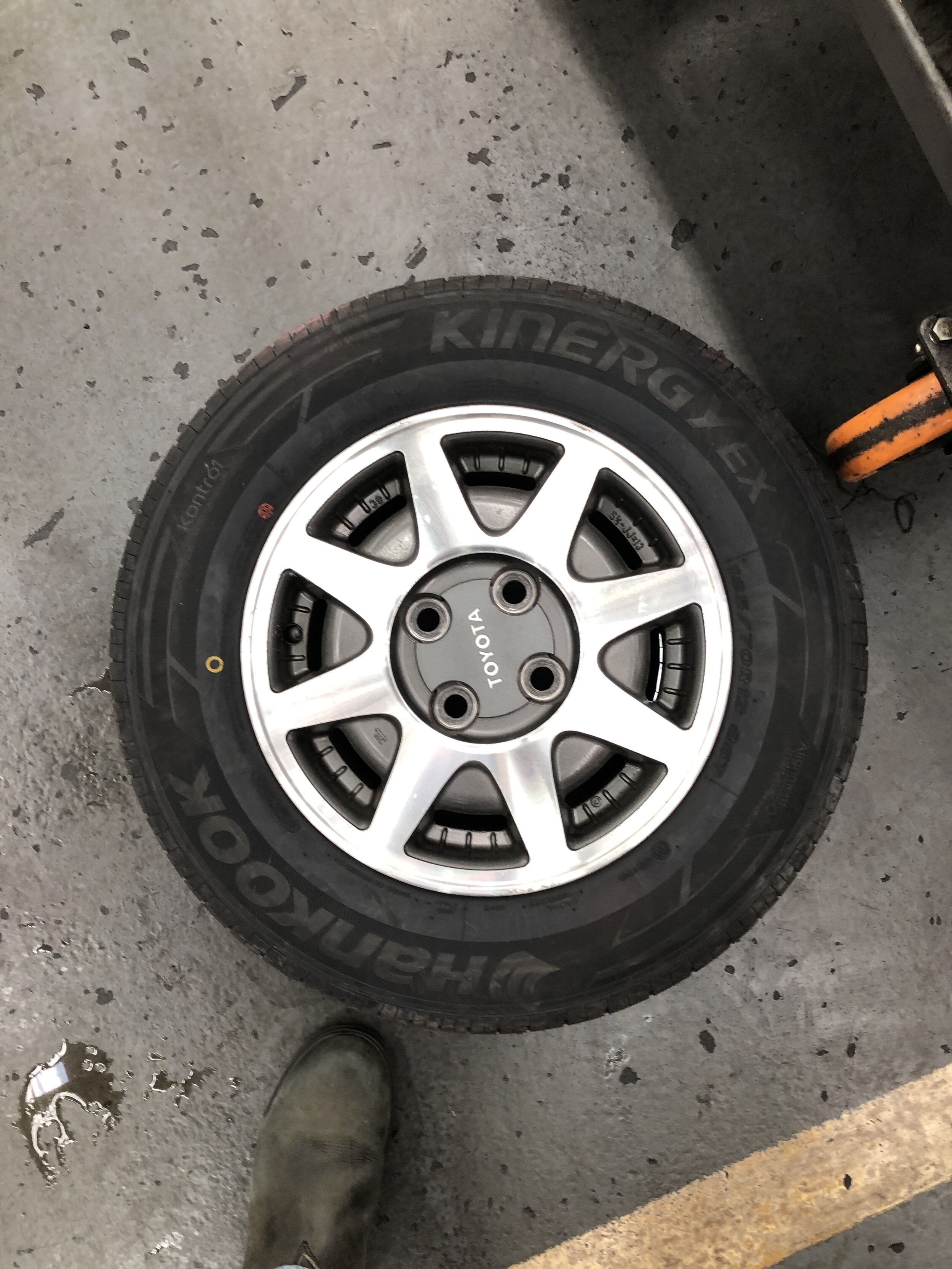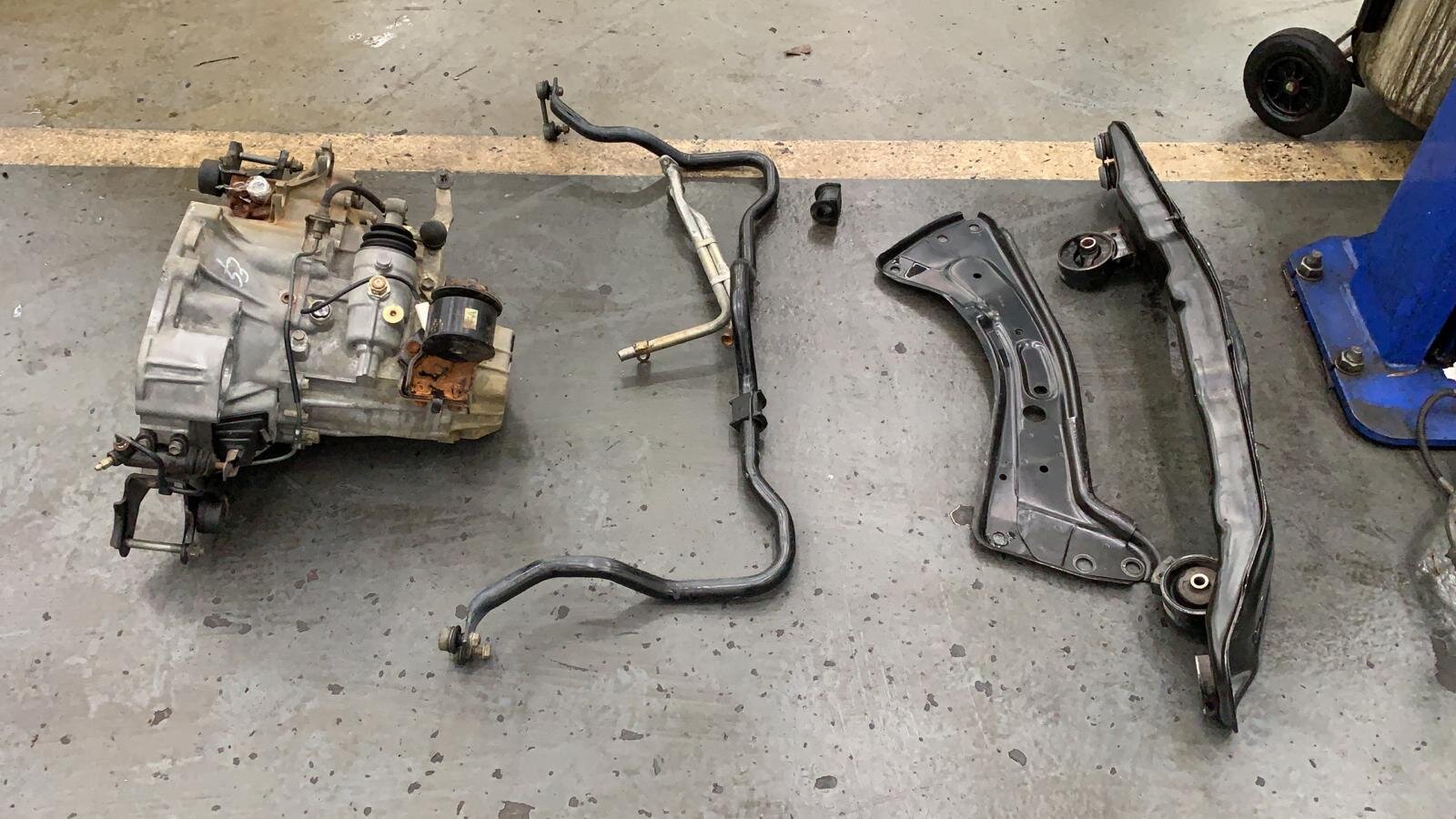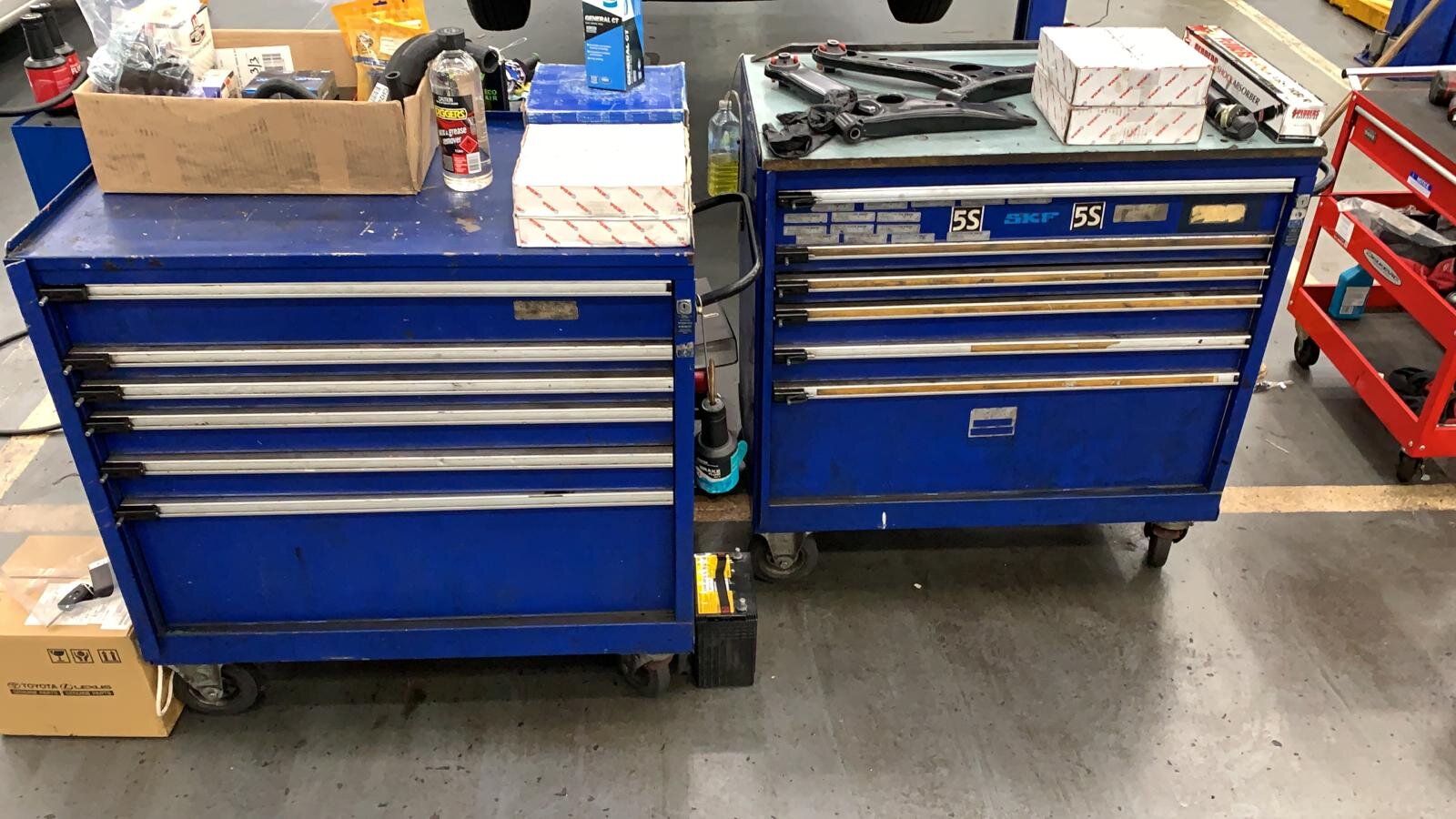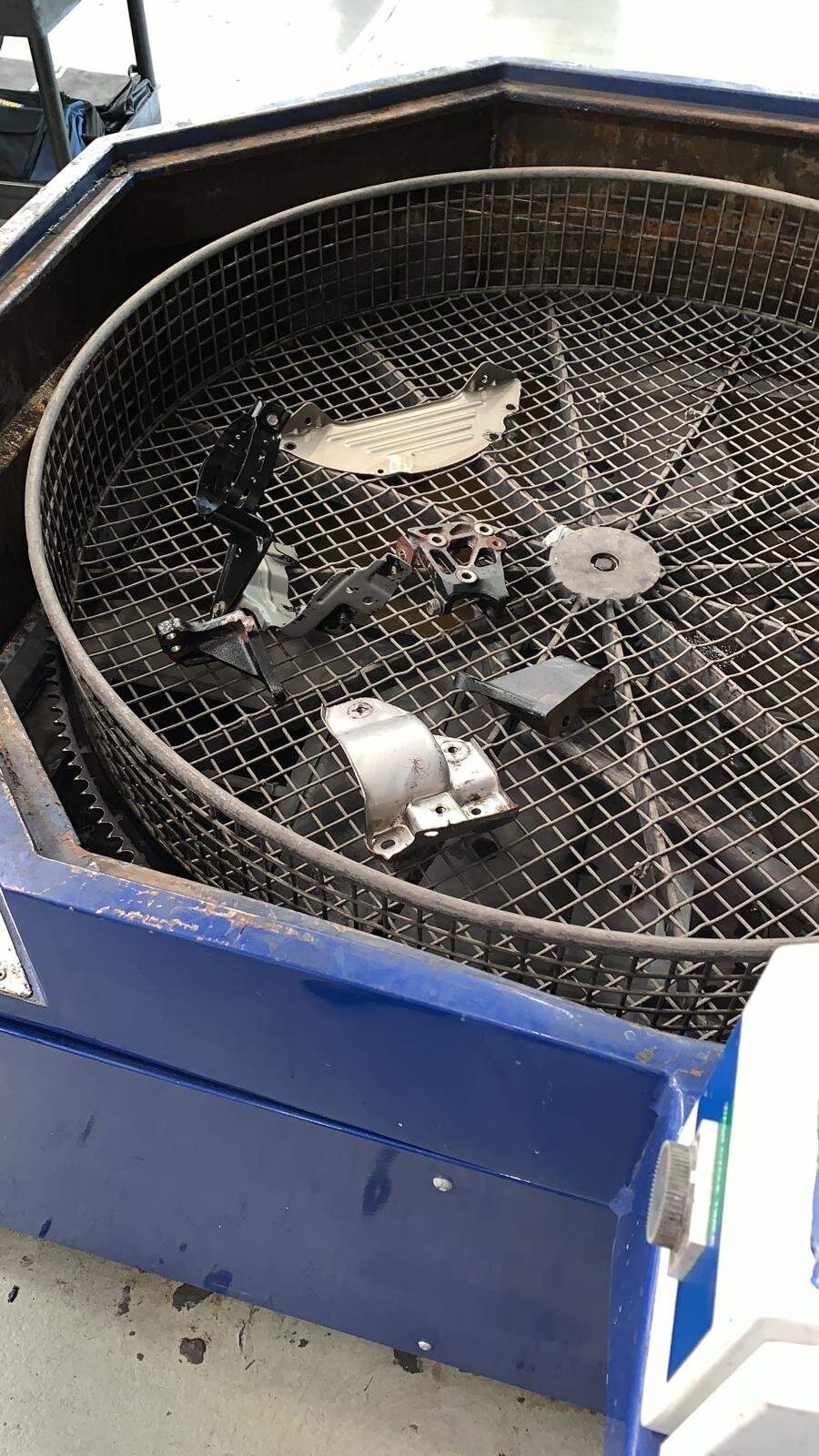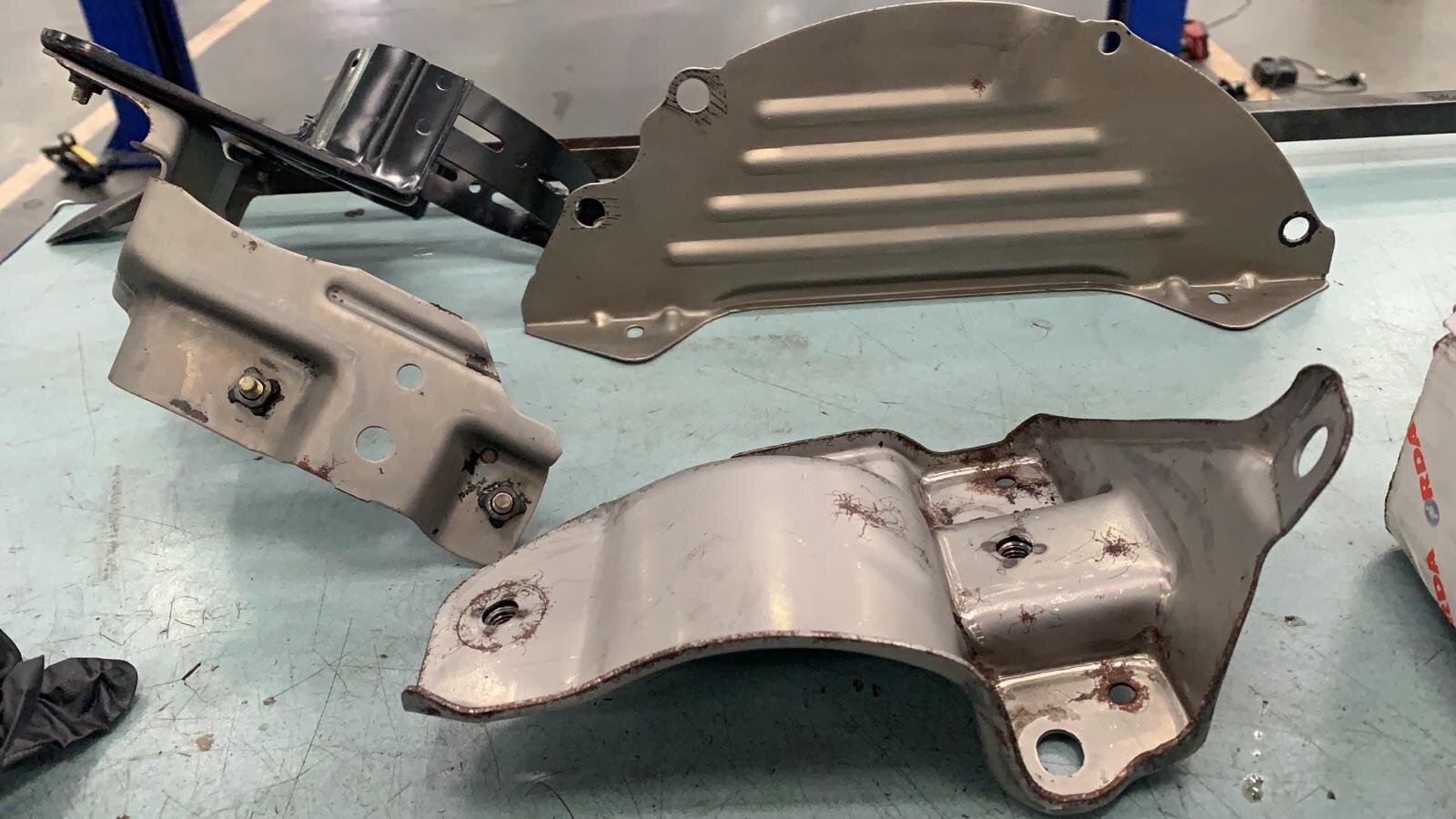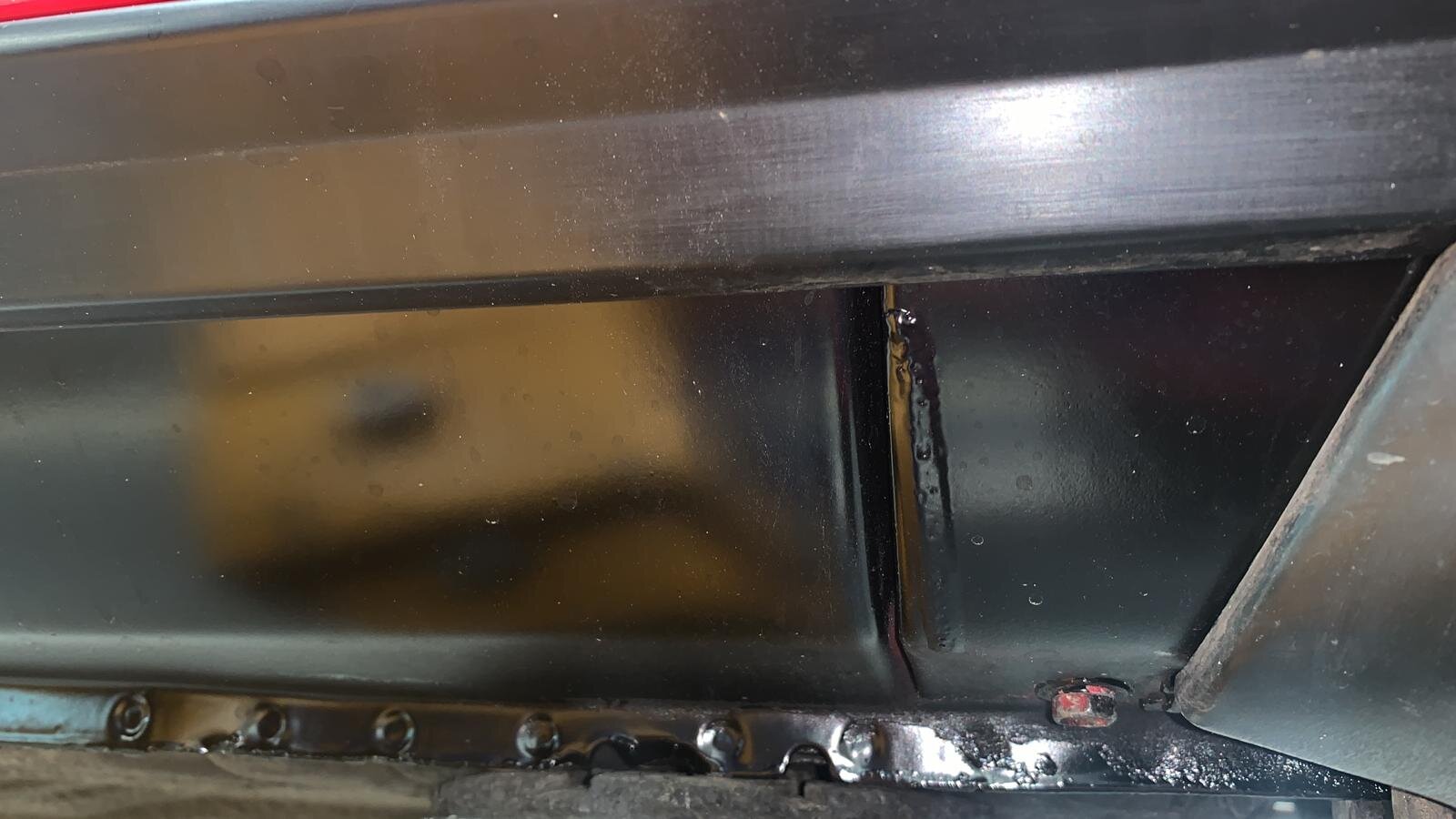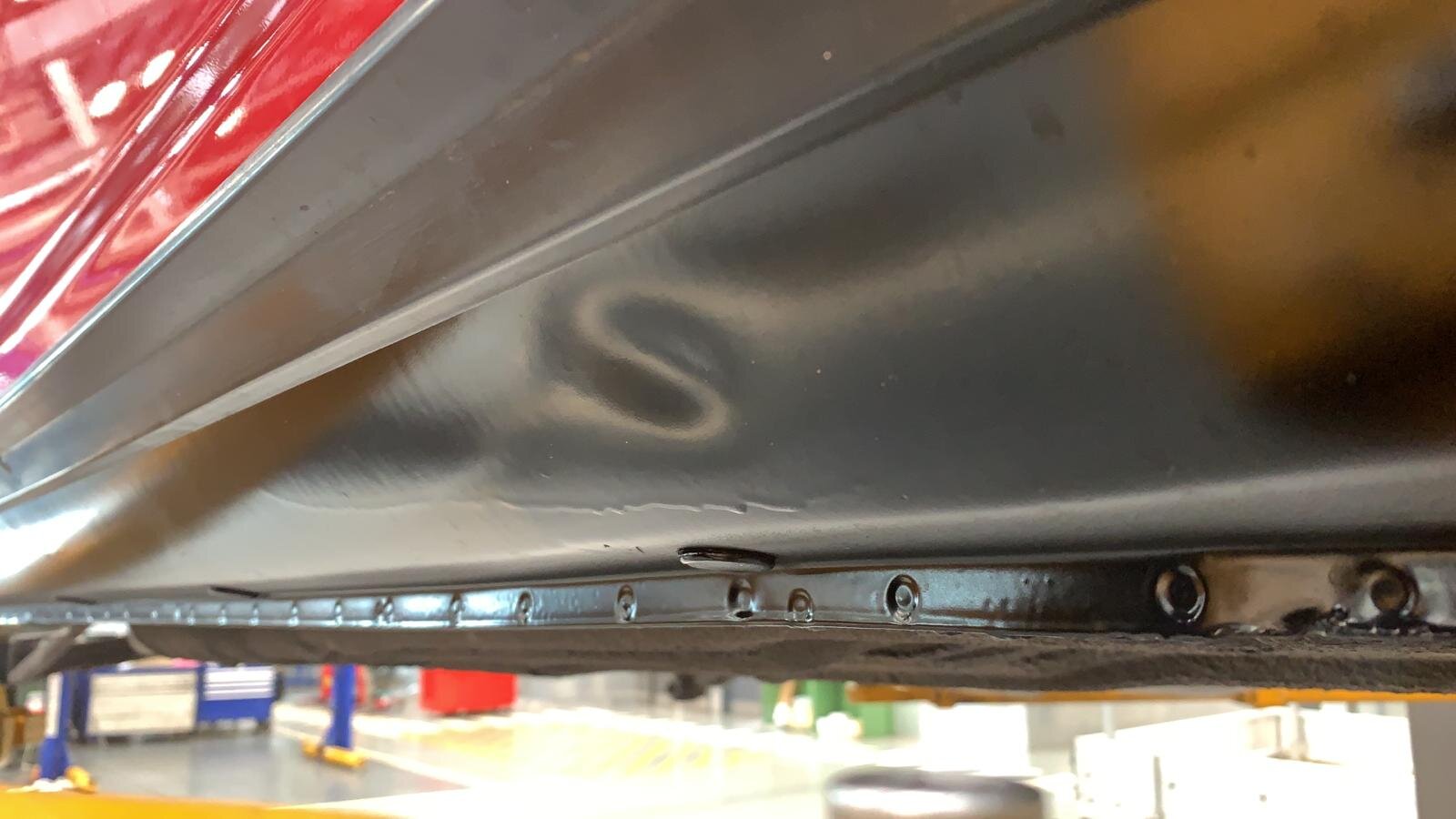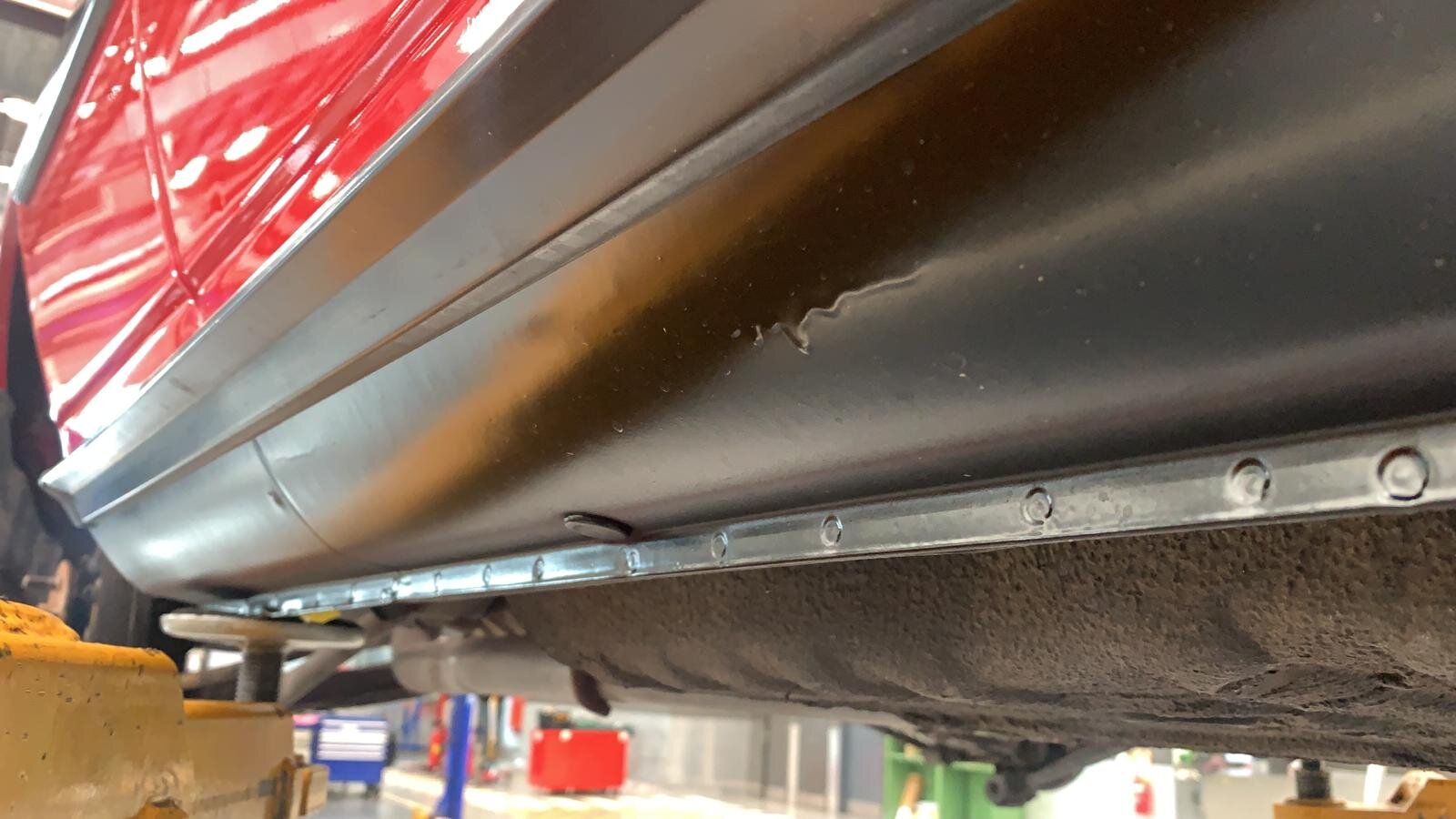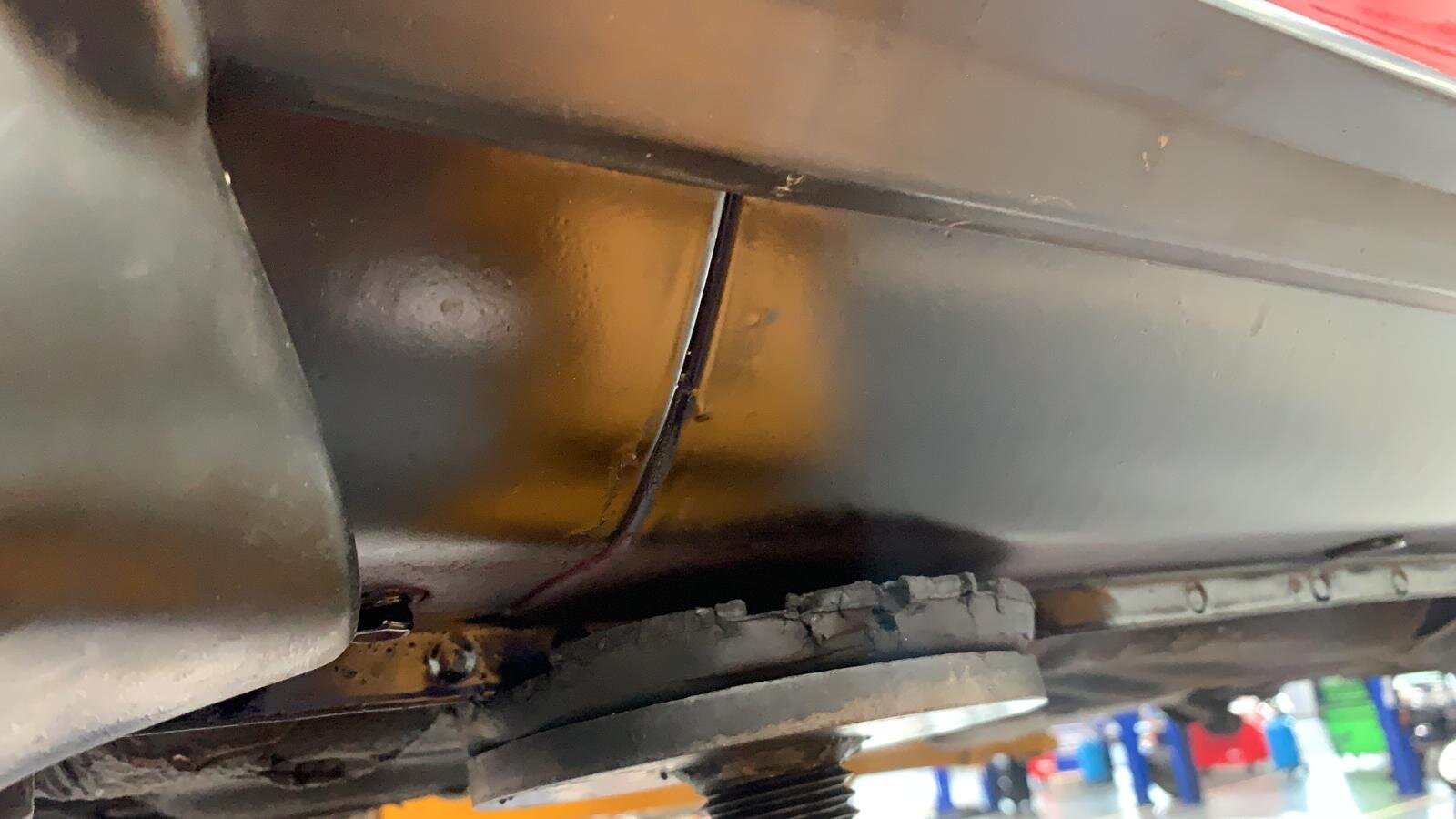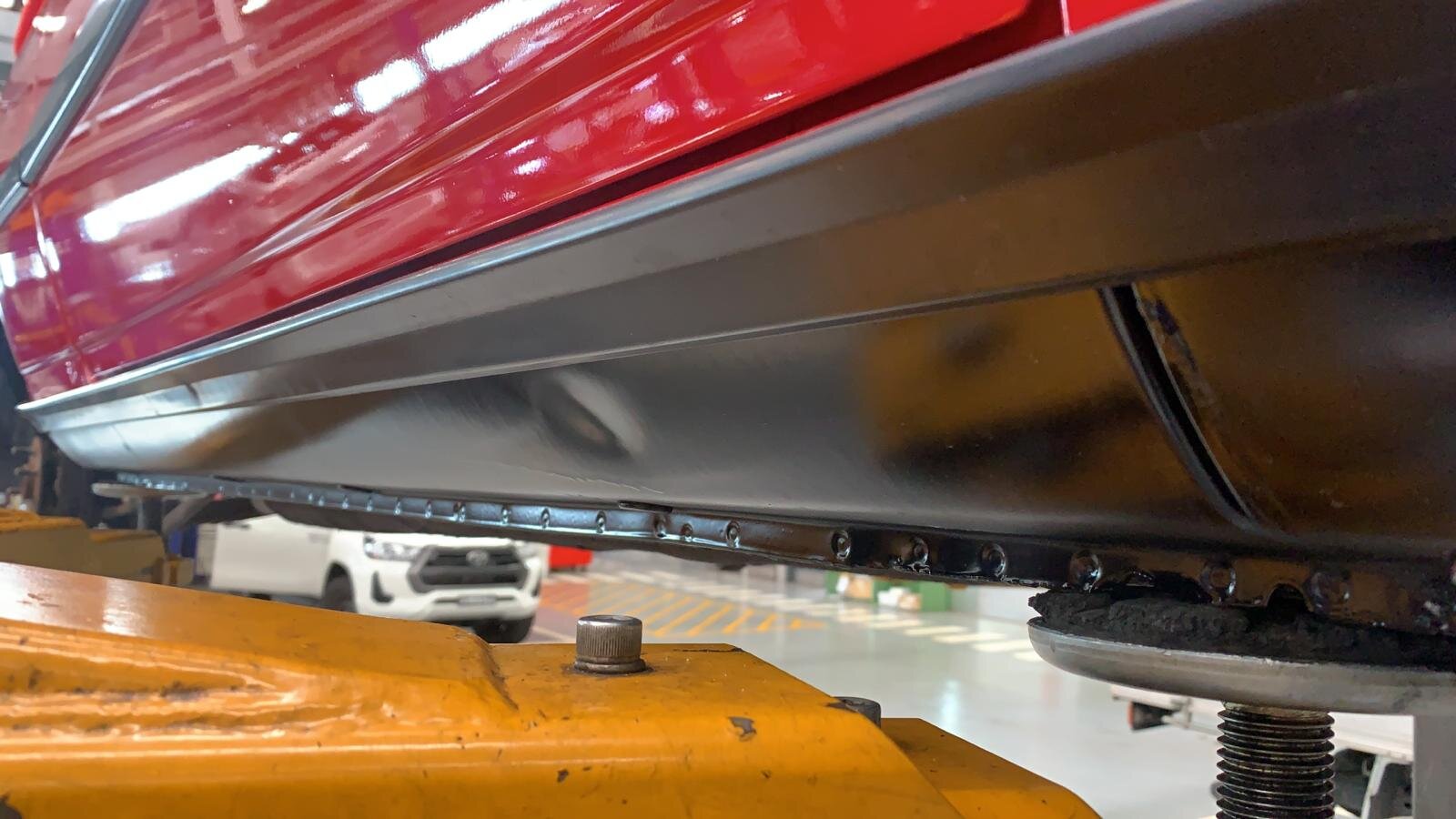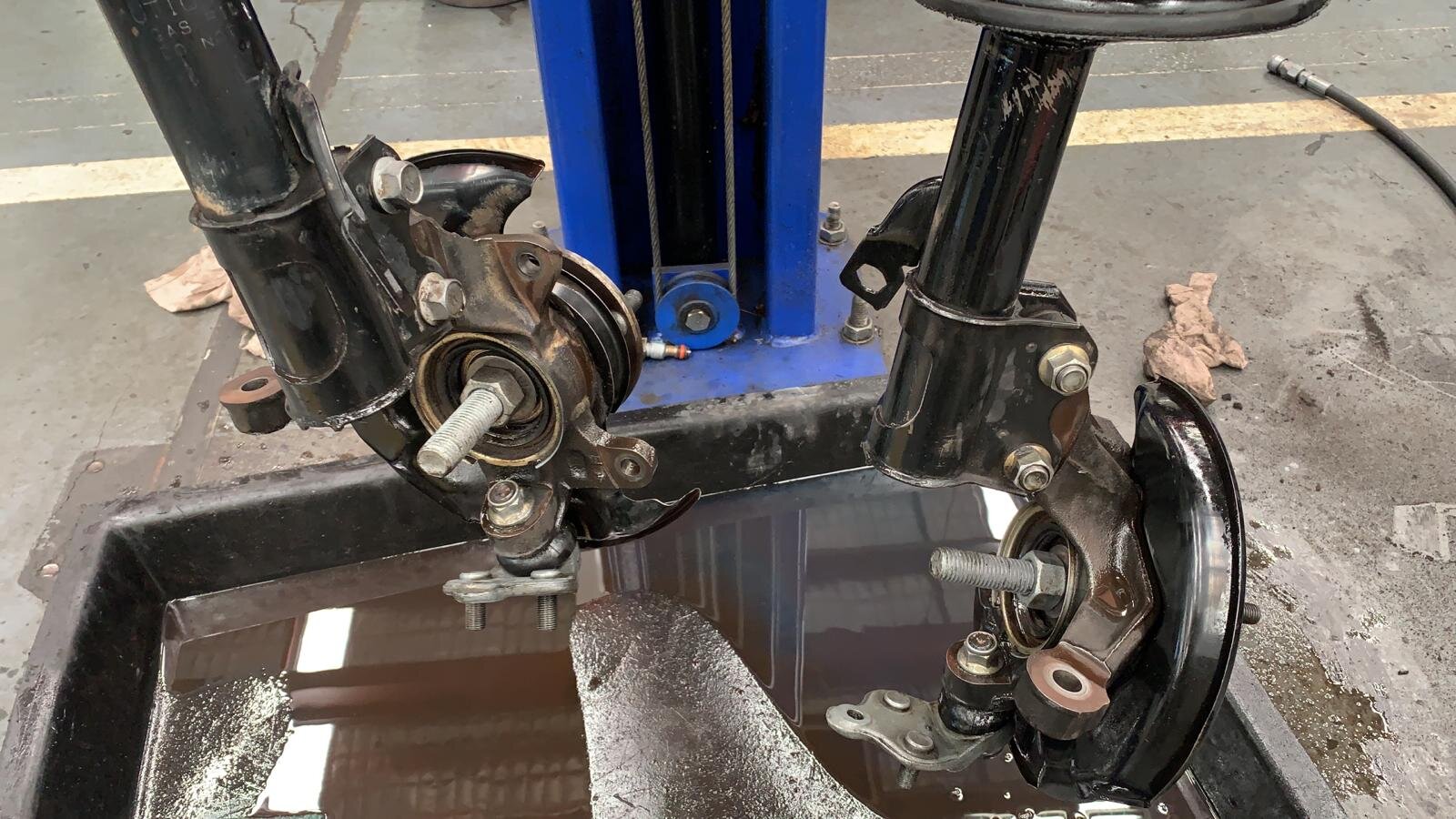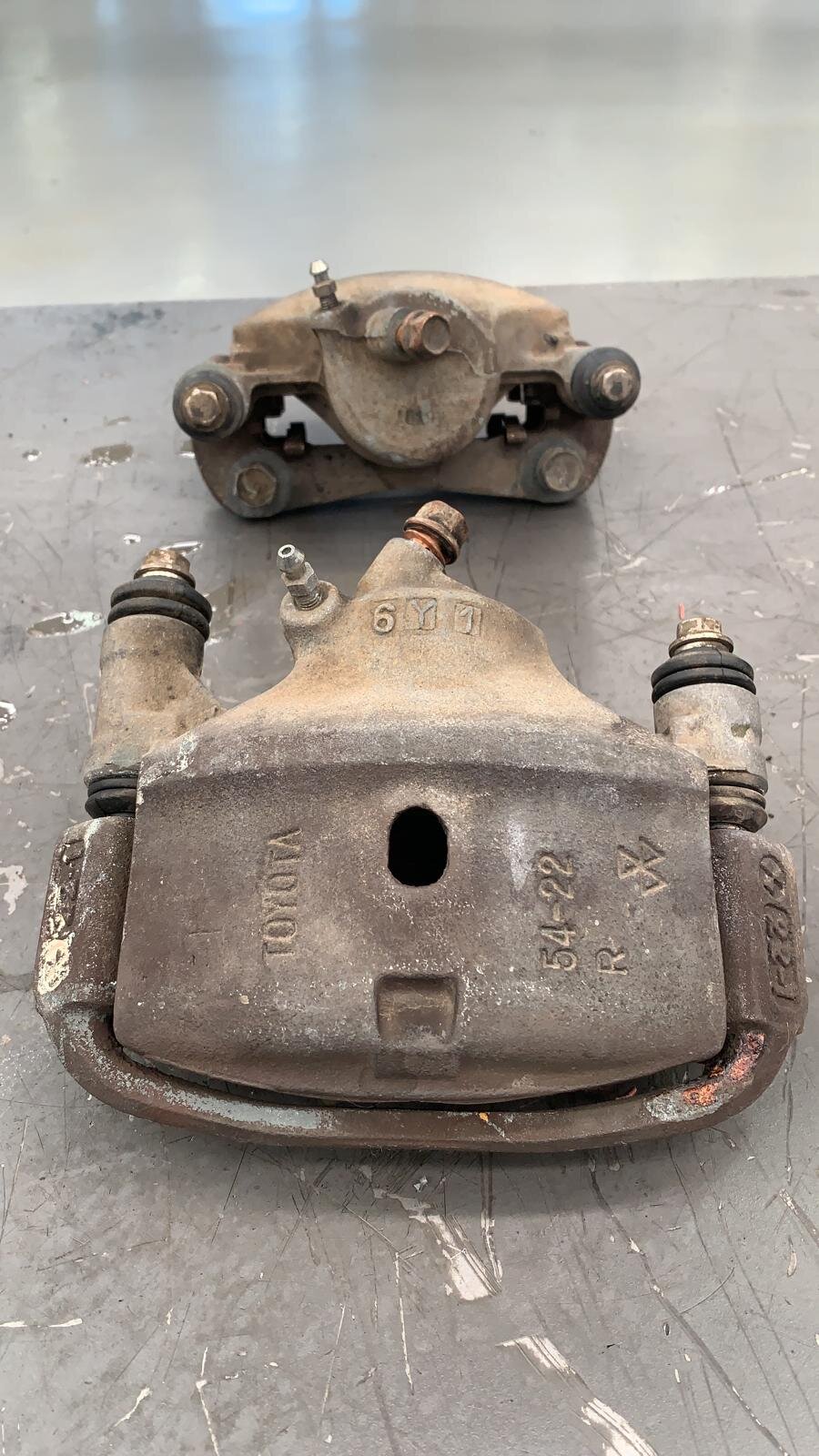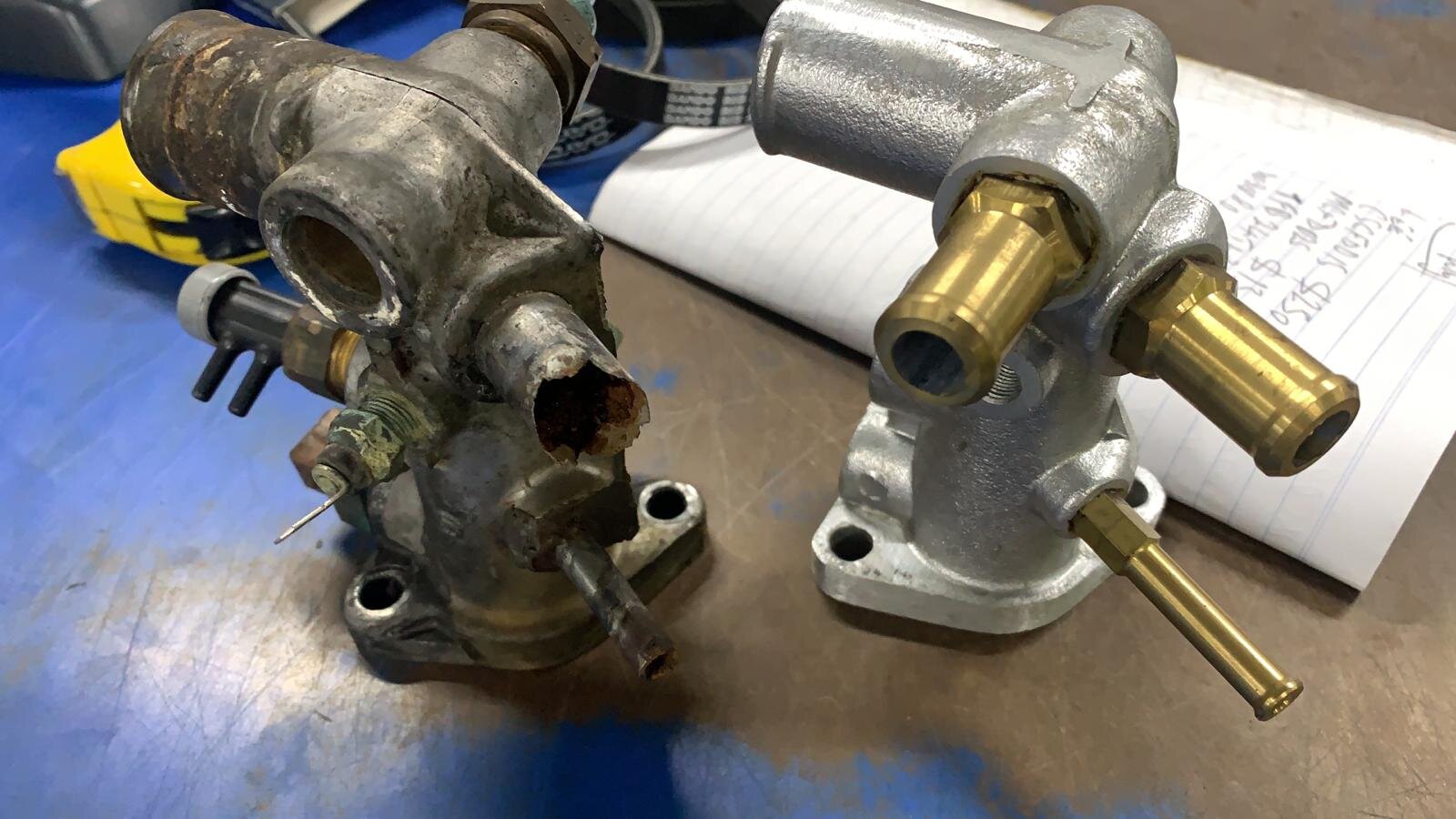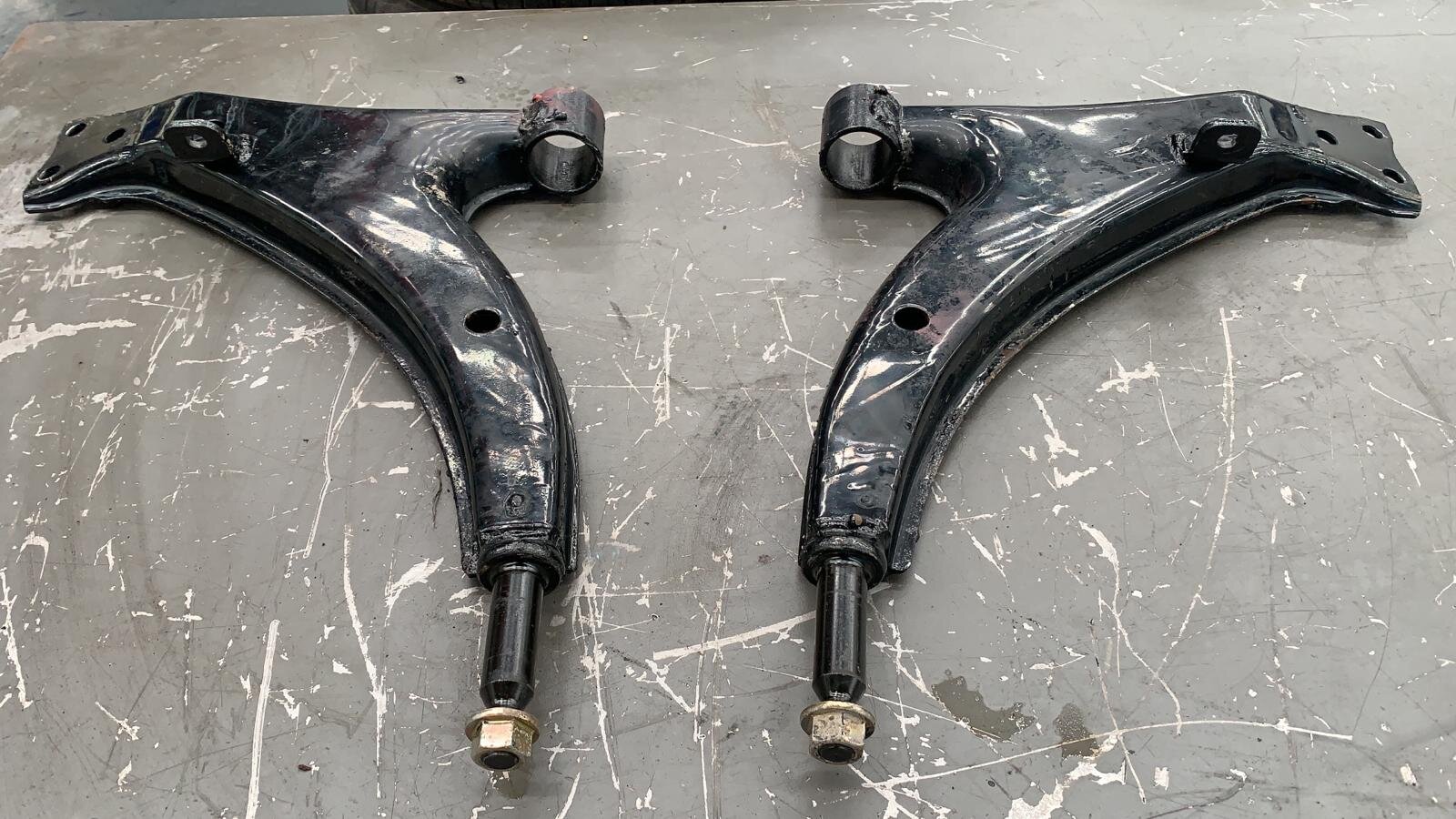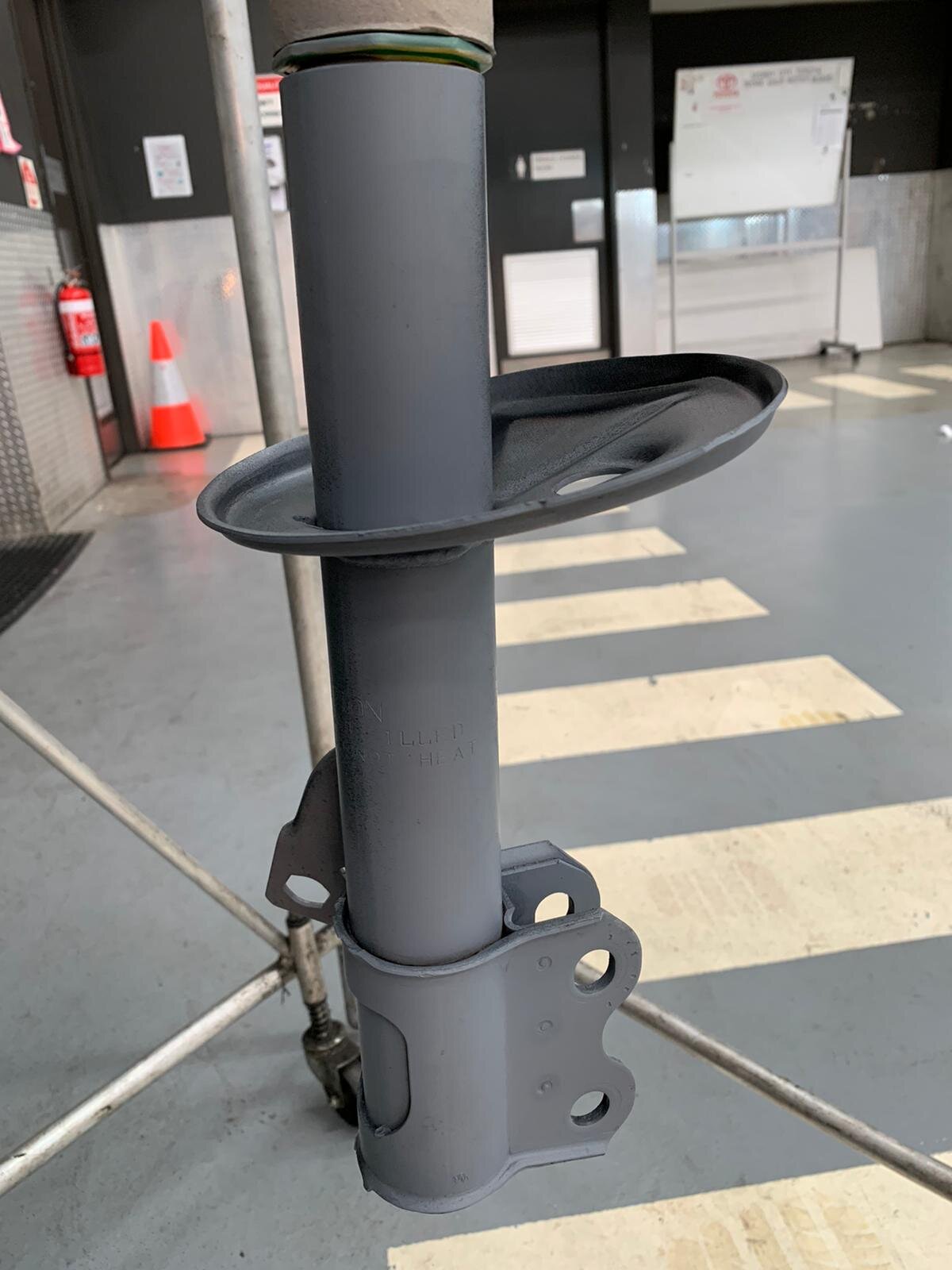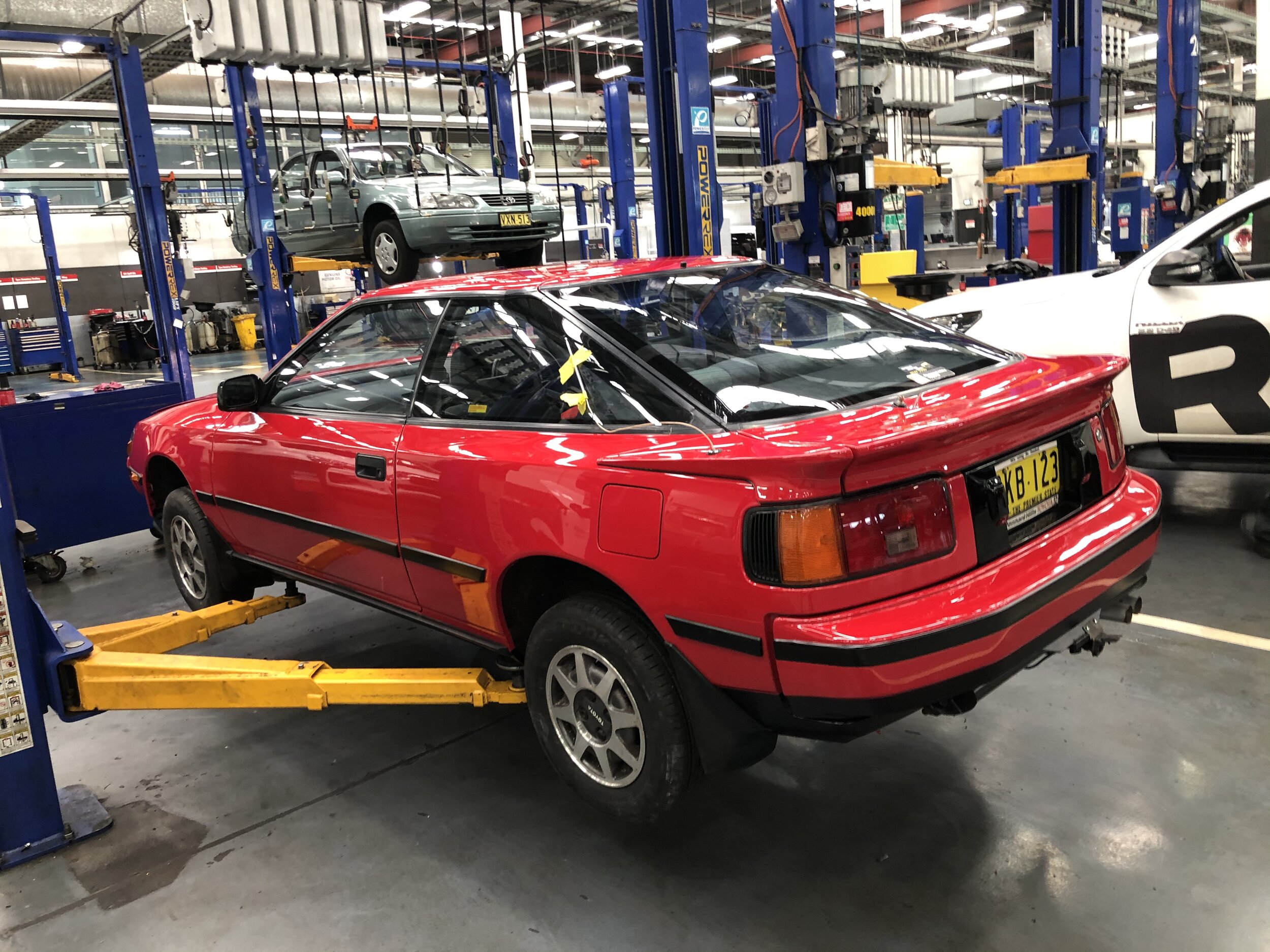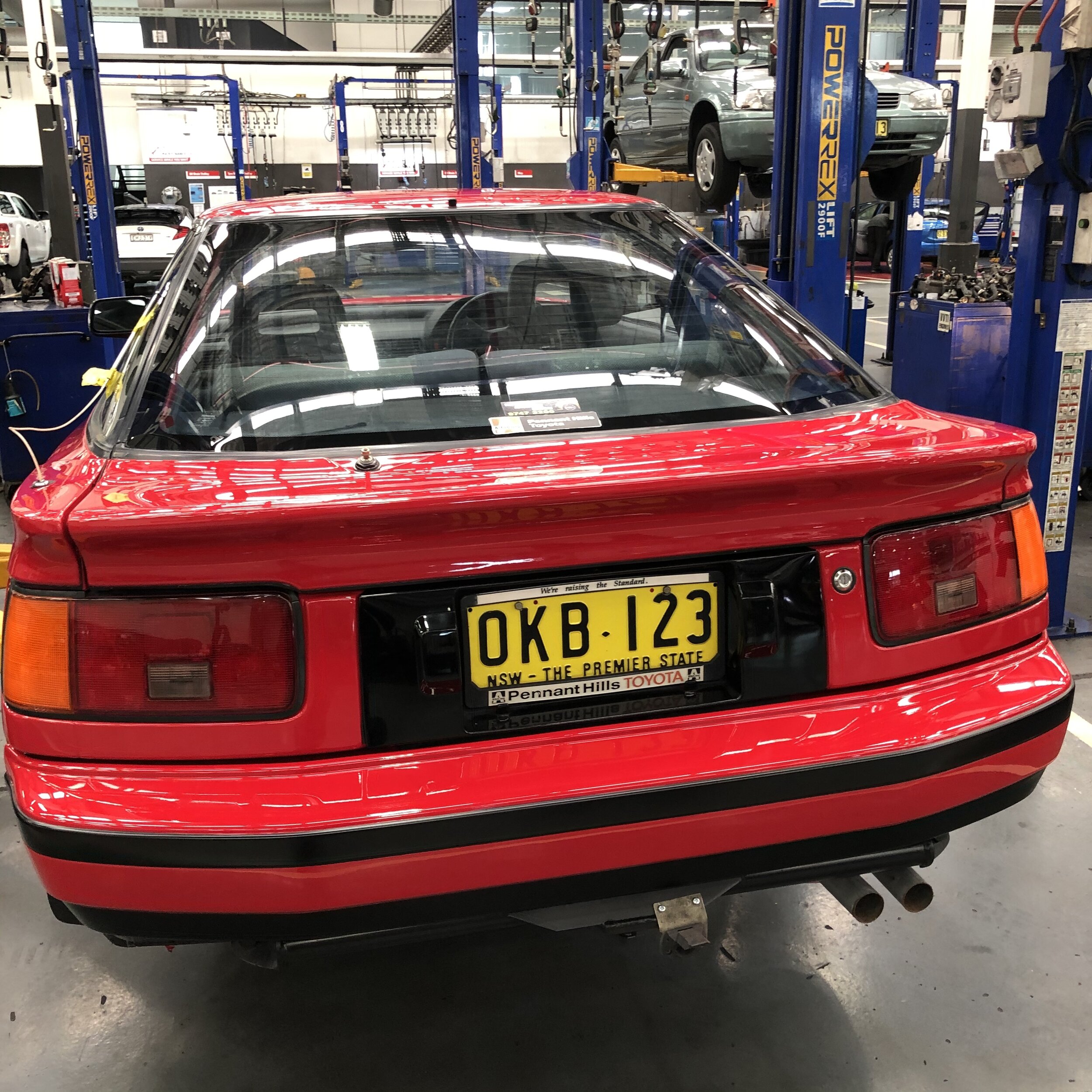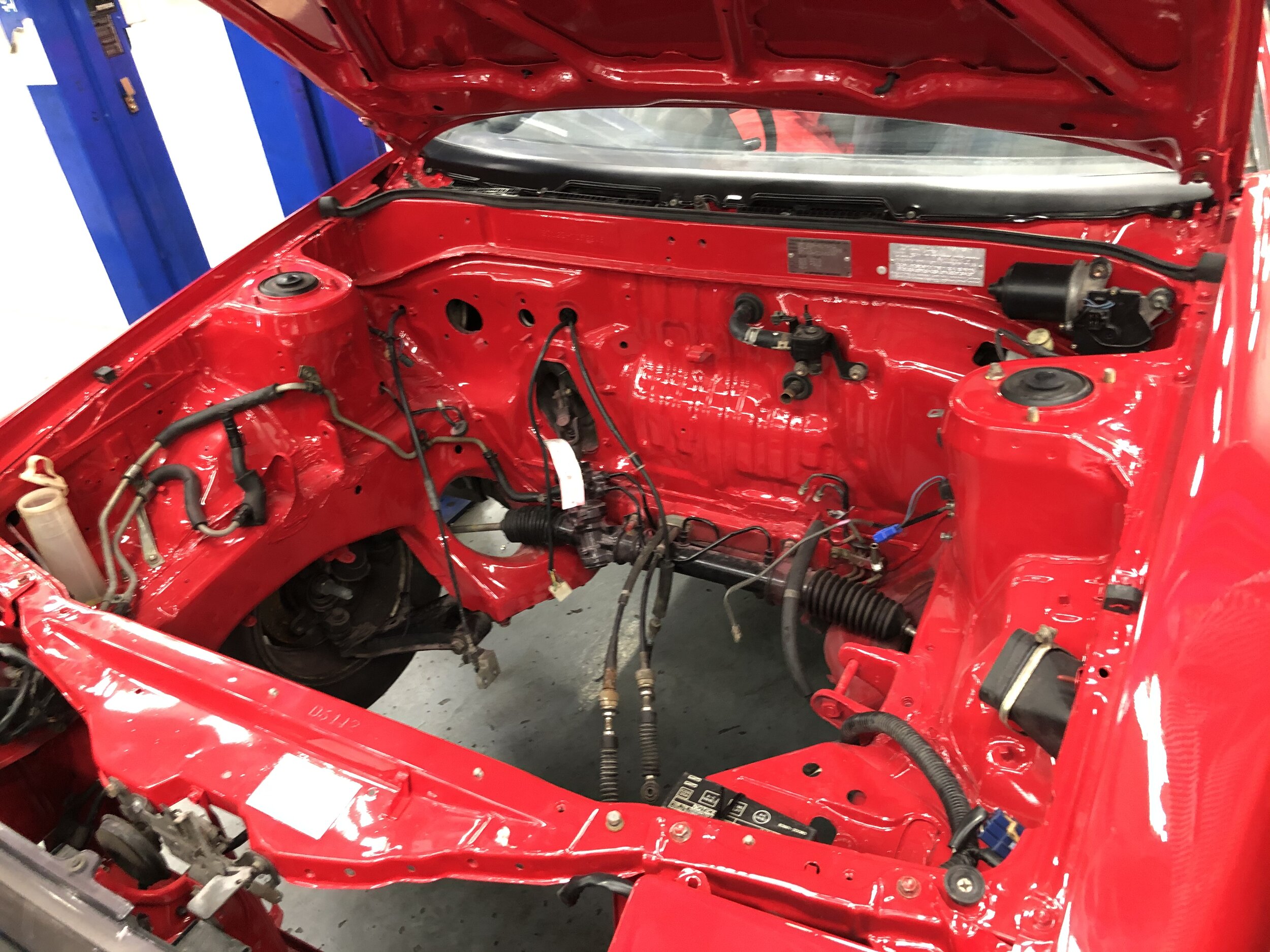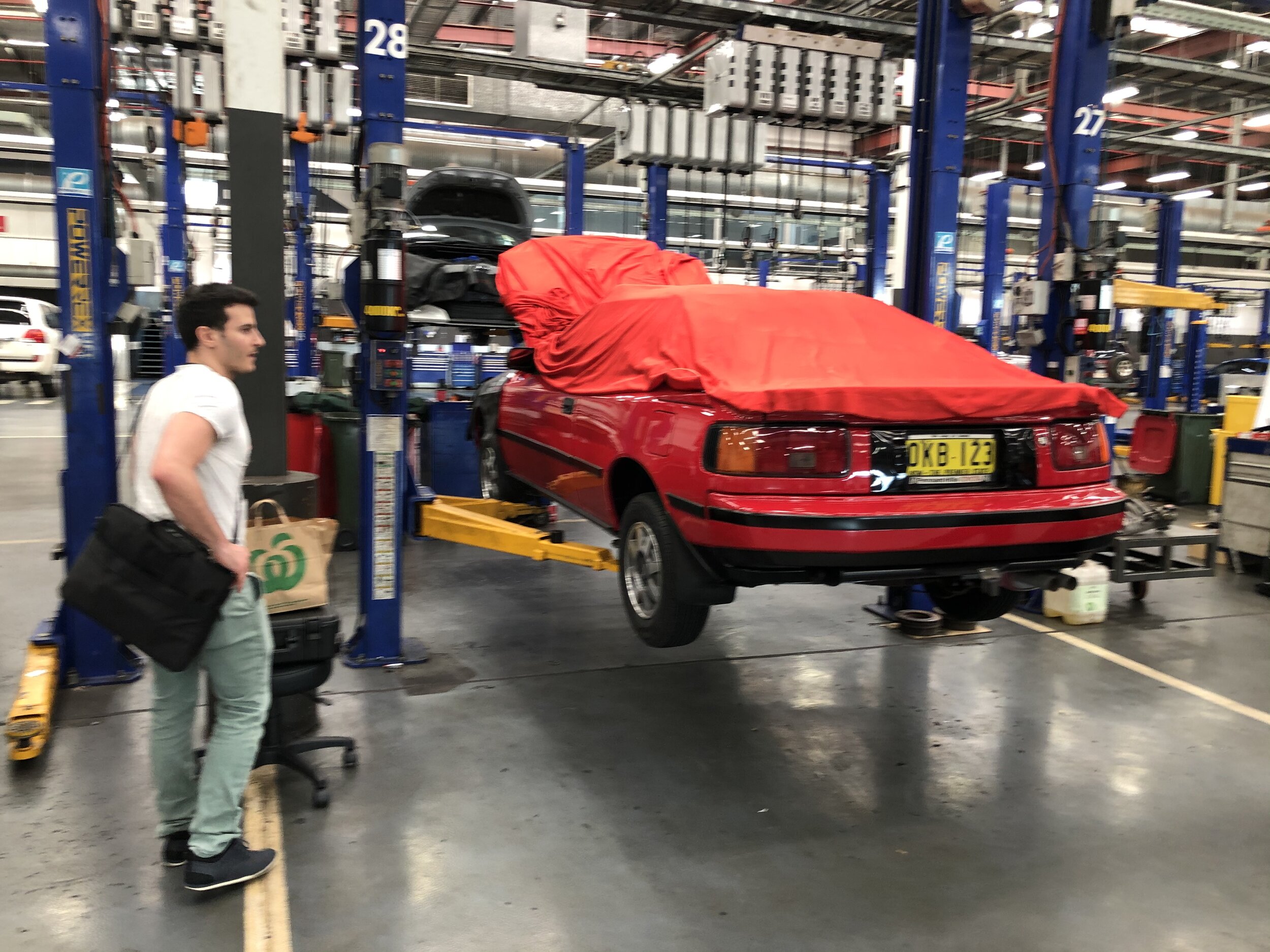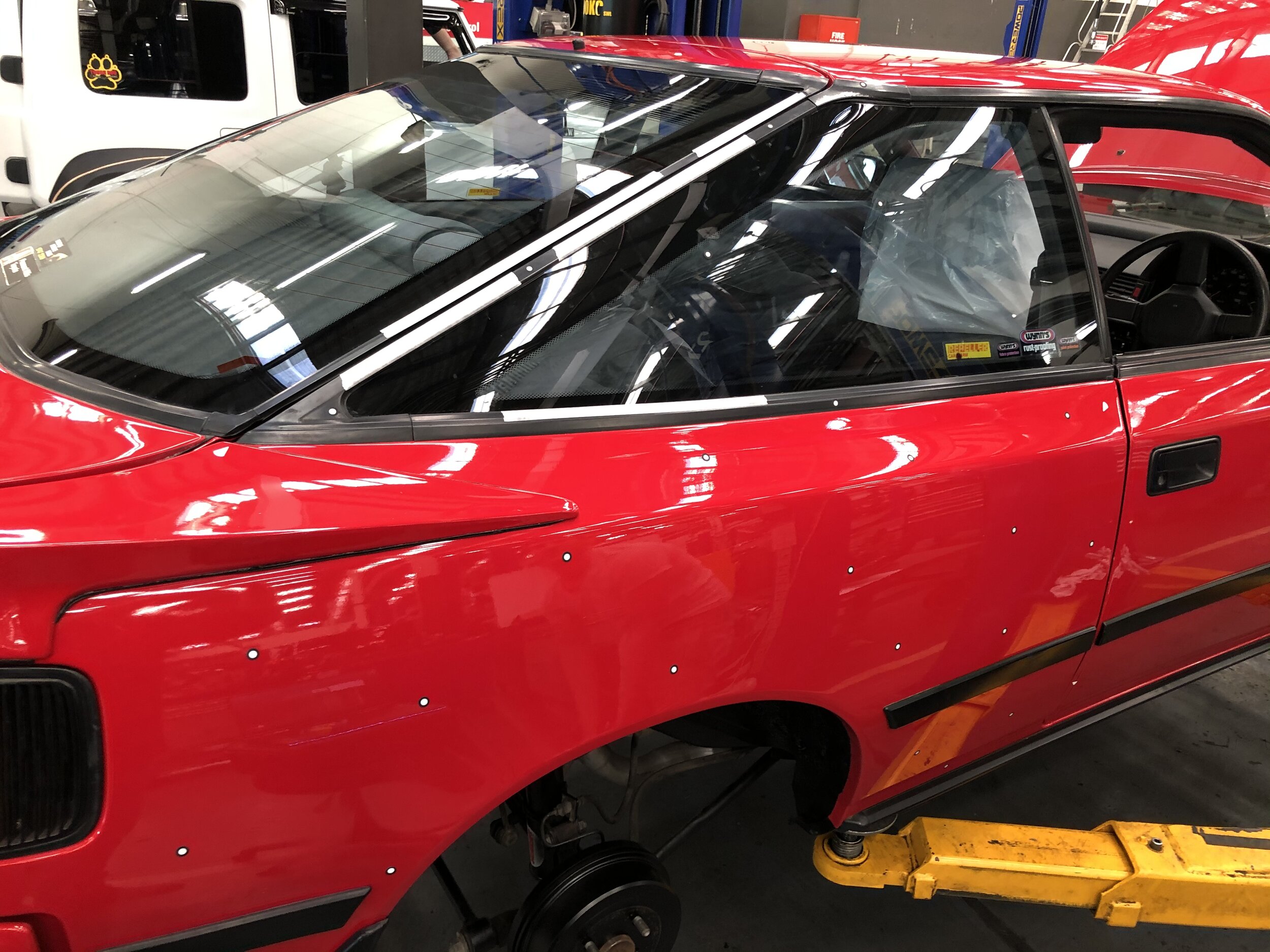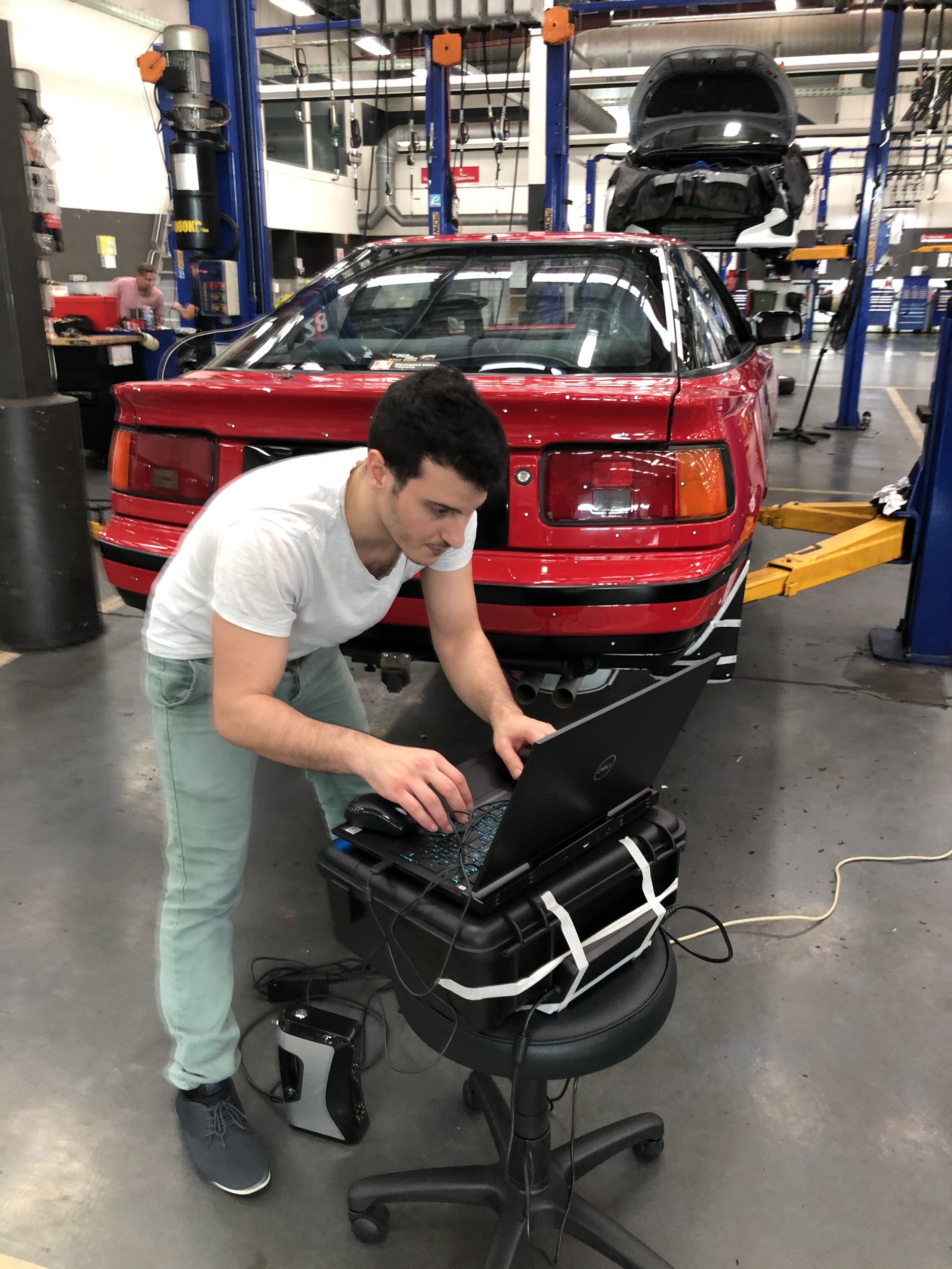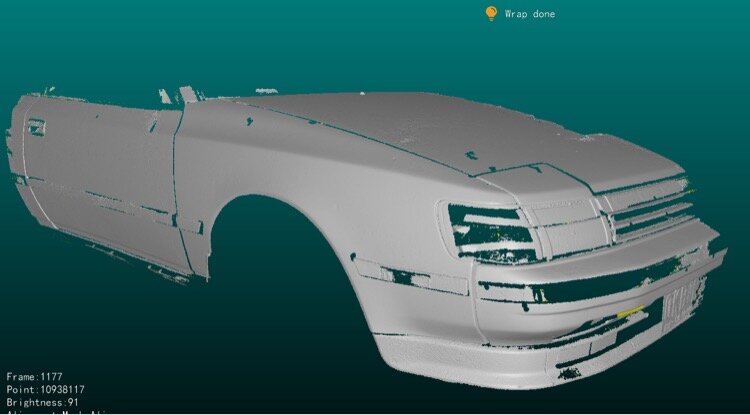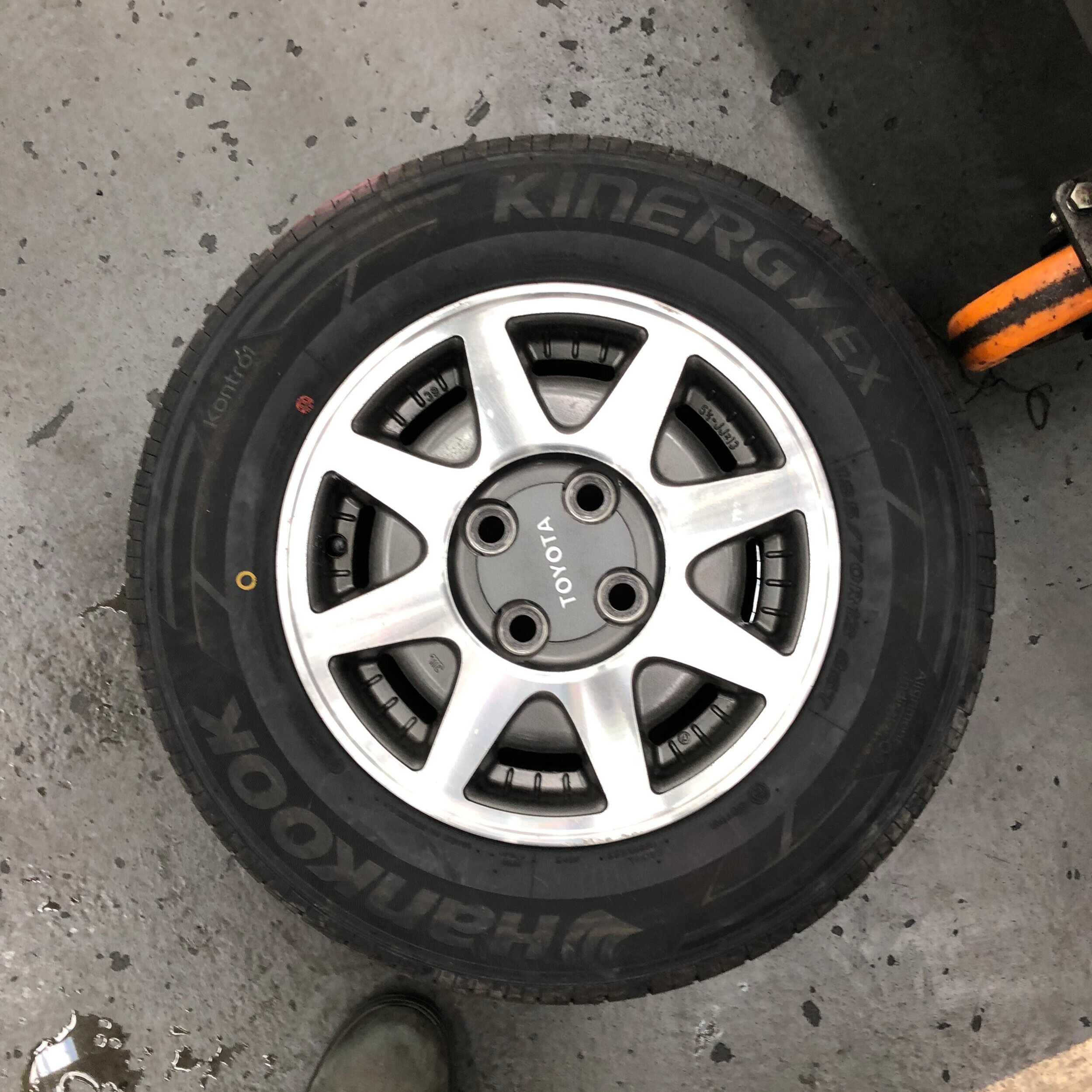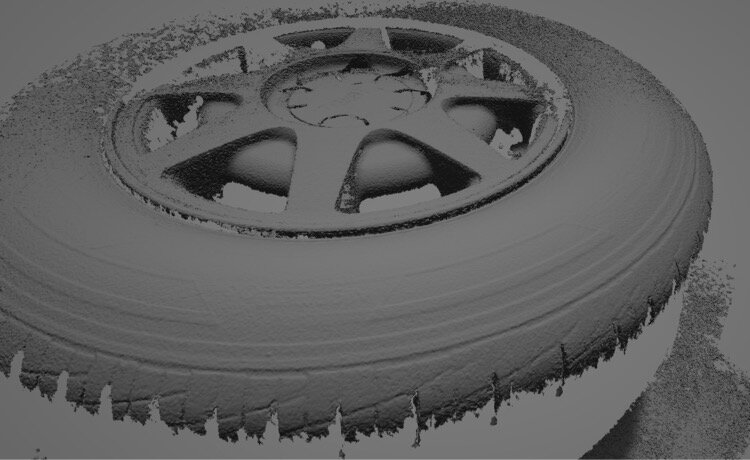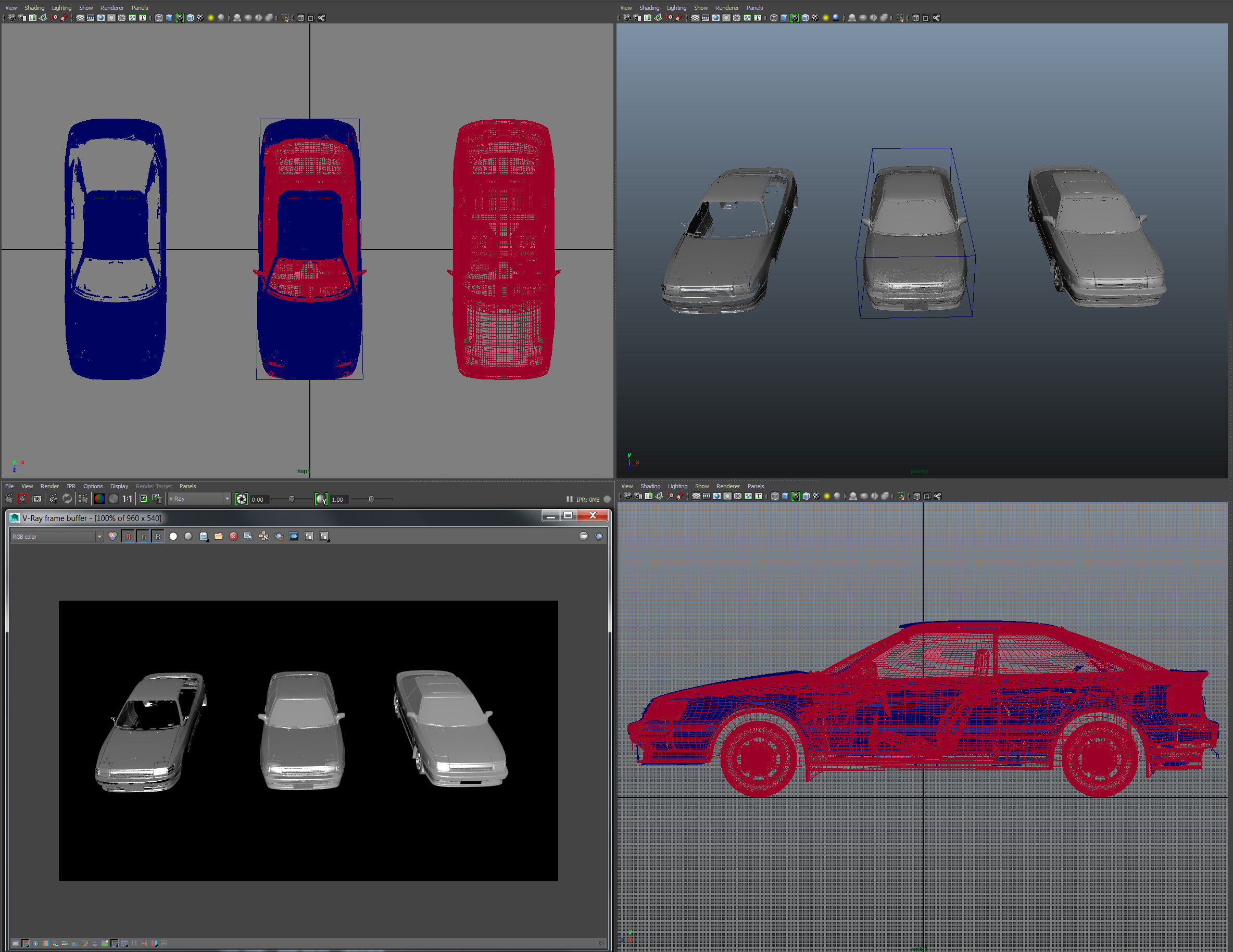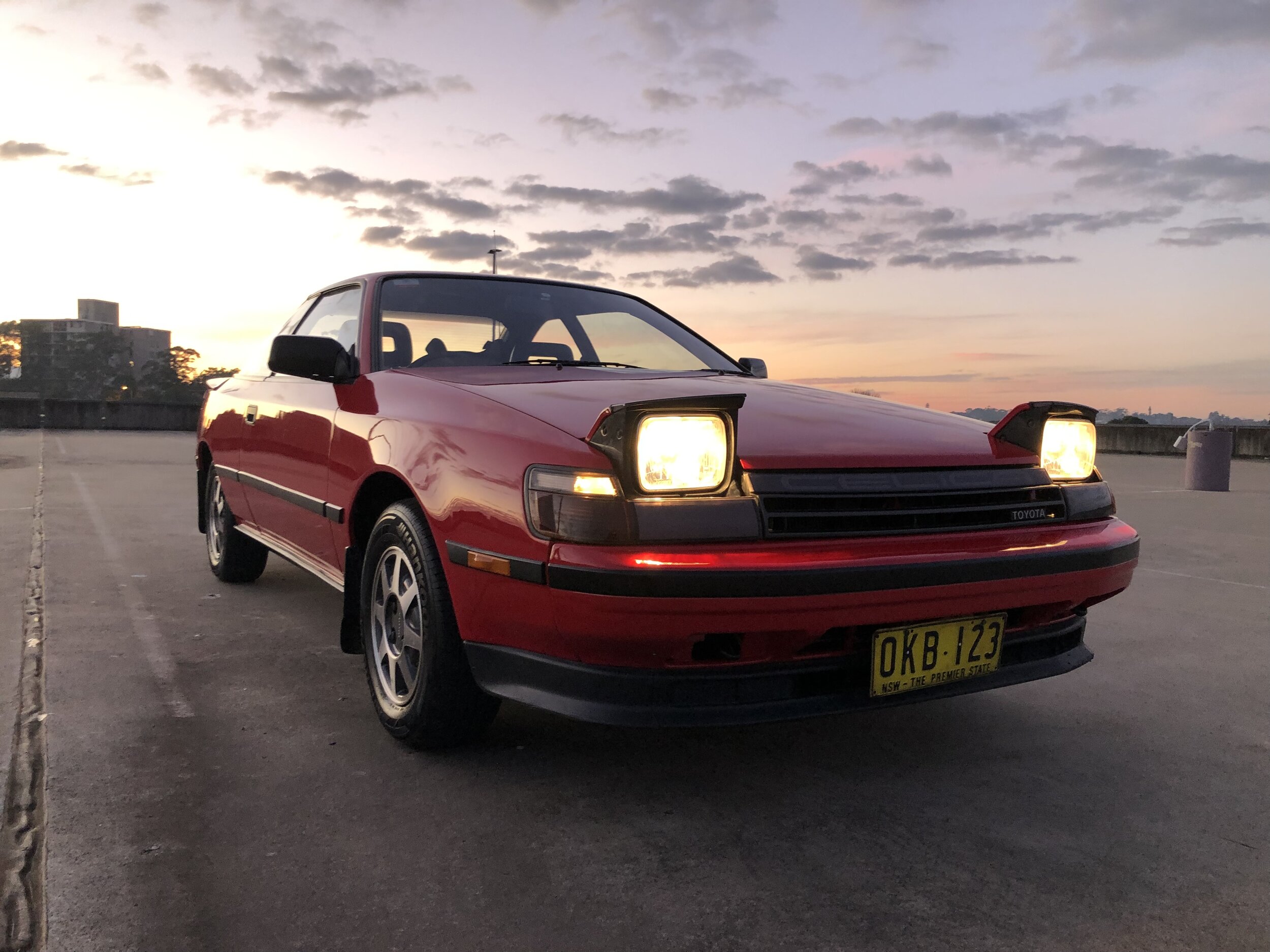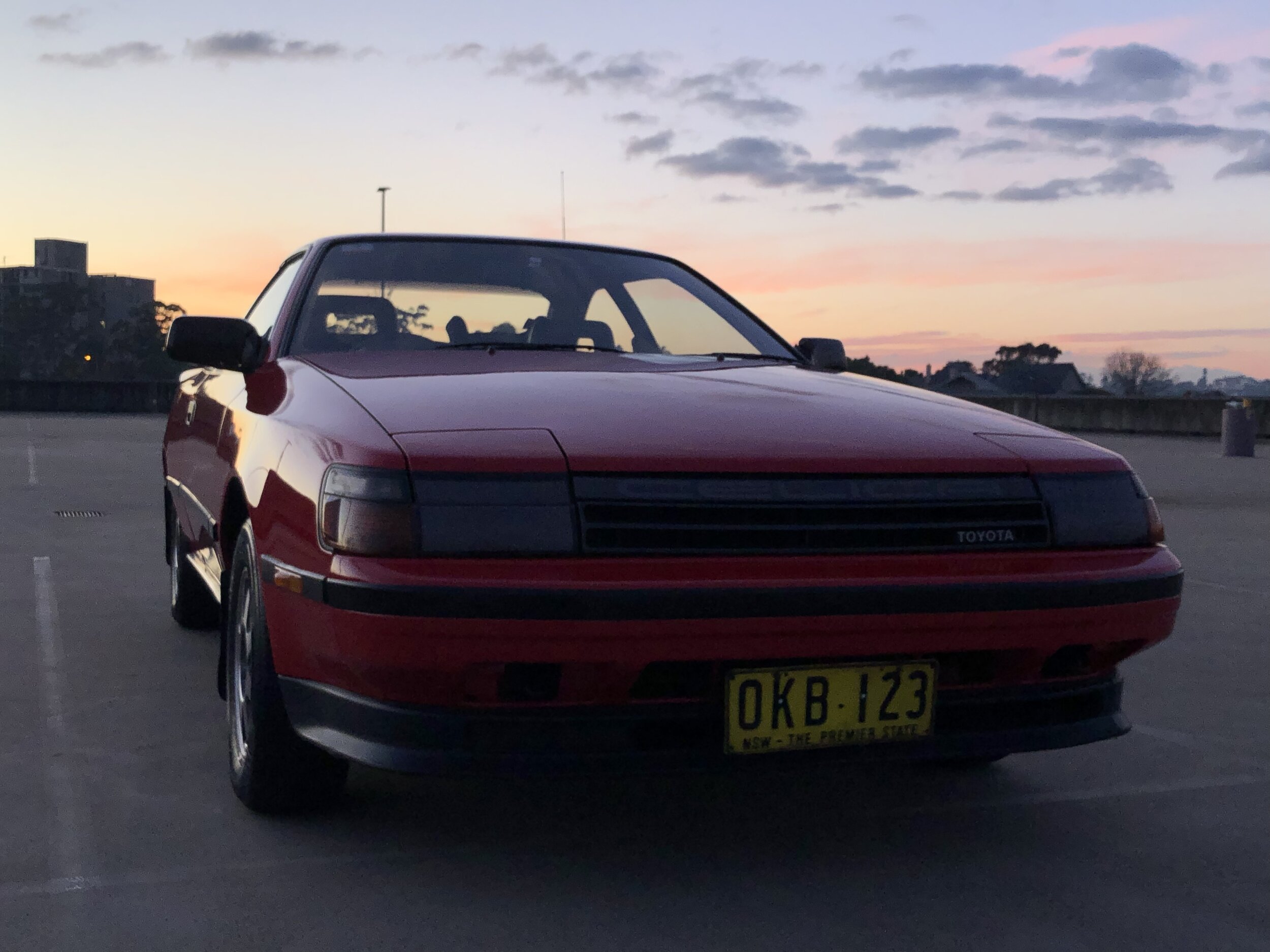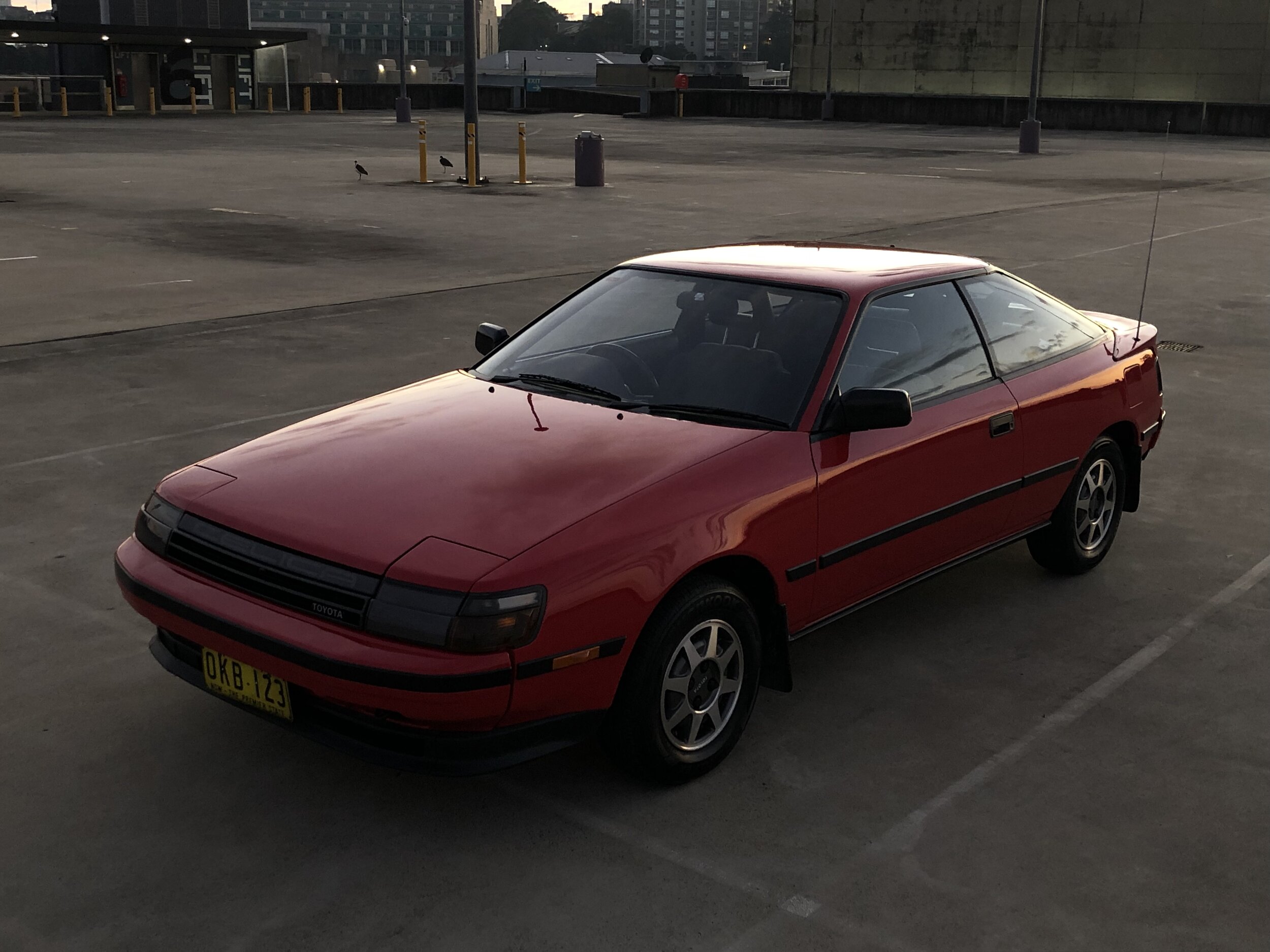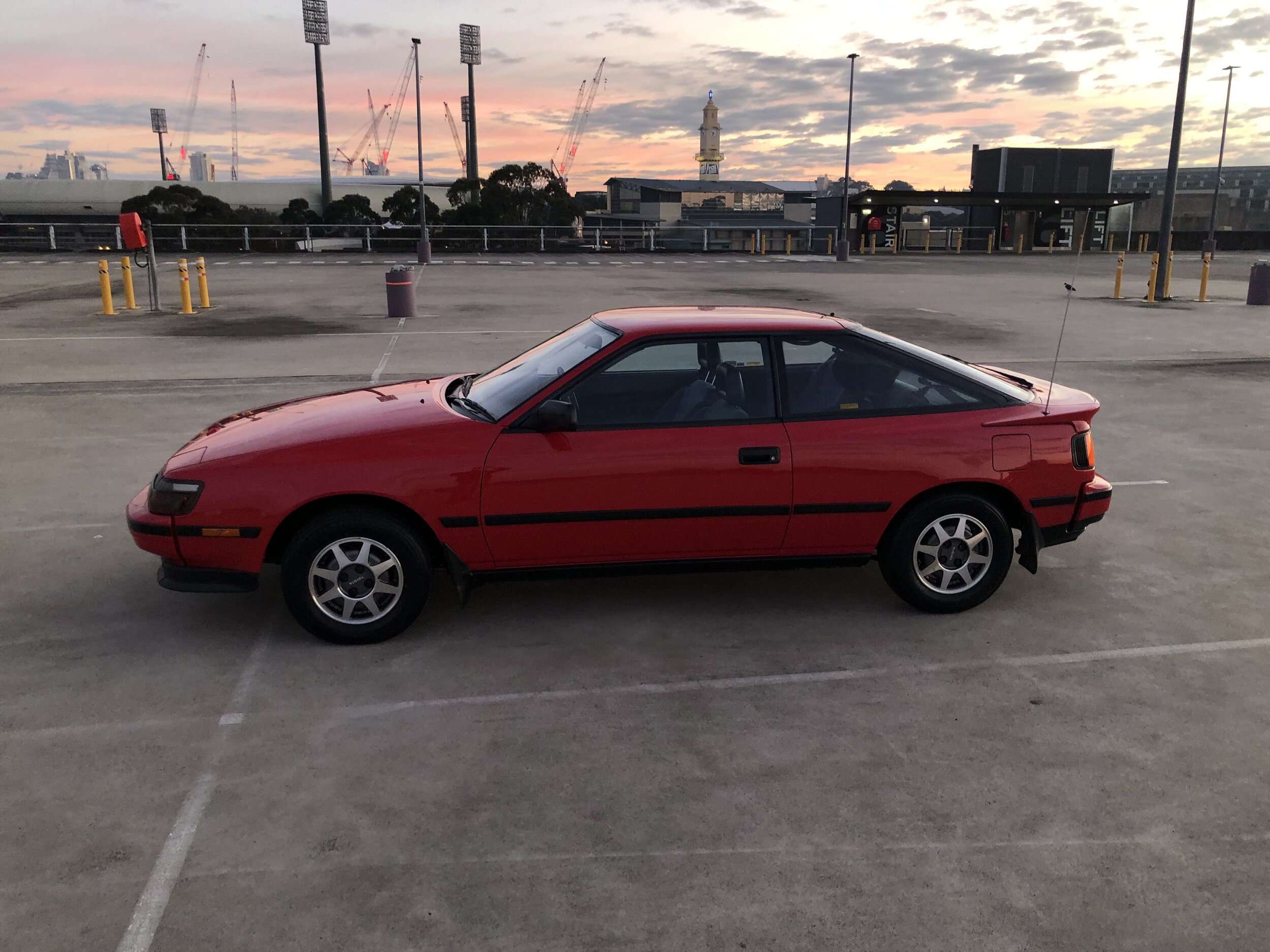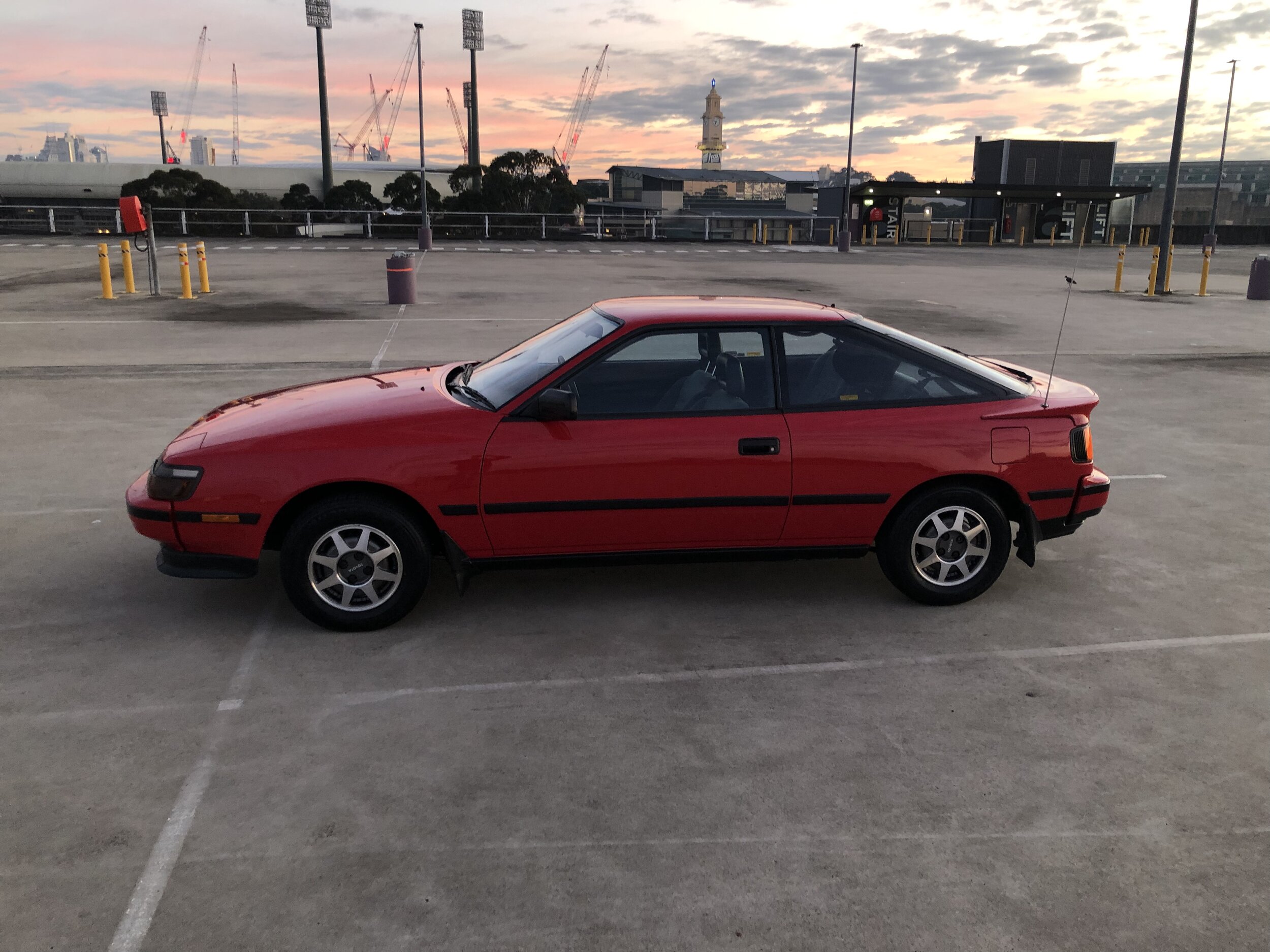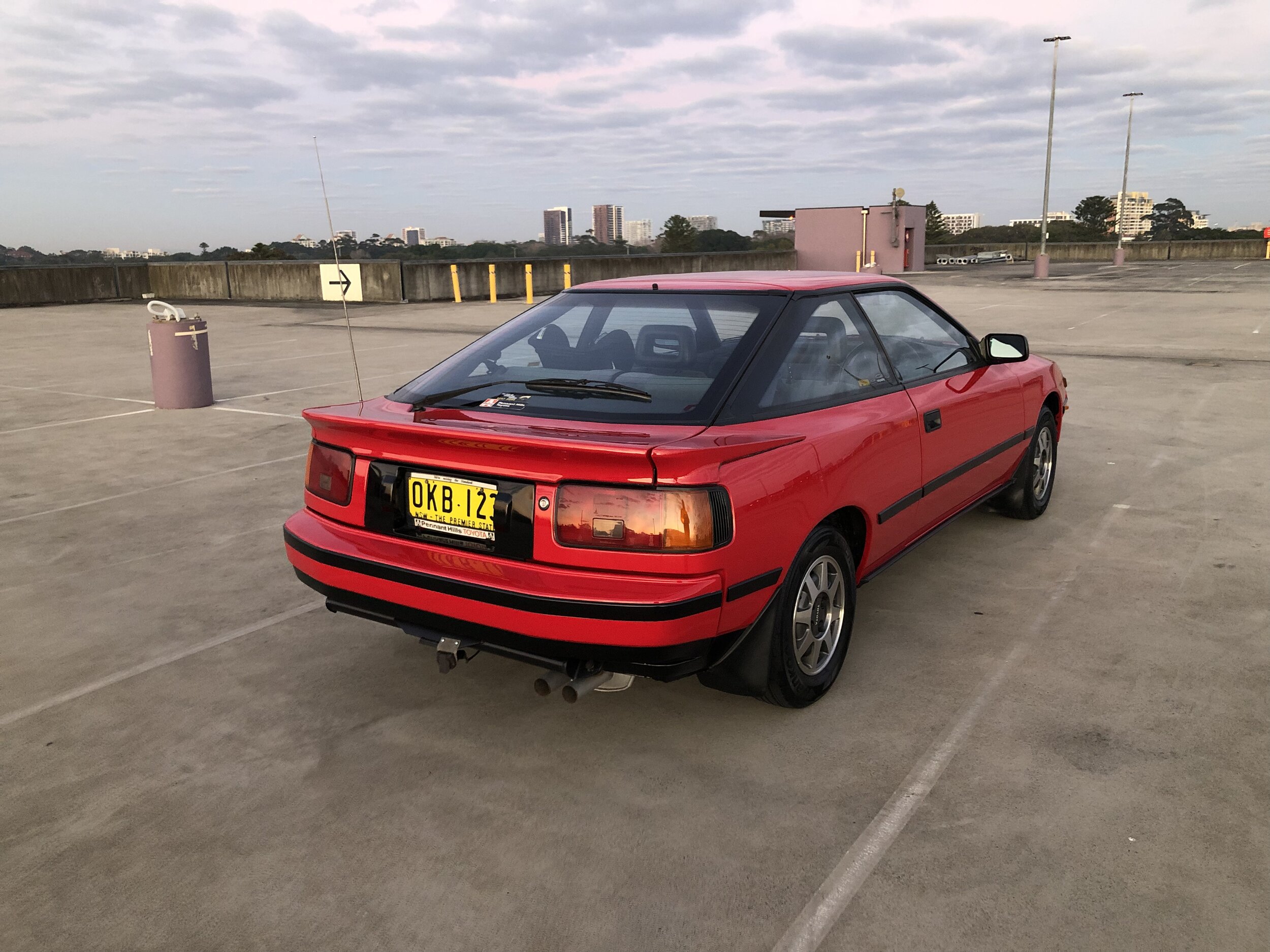Re_Celica
The aim of the re_celica project
To recycle an 80’s car as proof of the viability of consumer scale recycling of vehicles of this era with the goal of restoring the vehicle to as close to showroom condition as possible and to add 30 years to the lifespan of the vehicle.
In order to achieve this goal I determined that any such source vehicle would likely need a full/partial body restoration, full/partial respray, a full/partial engine rebuild OR EV conversion.
80’s retro car ads to service the froth for our 1987 Toyota Celica test vehicle
the value of nostalgia
I have wanted a 1987 Toyota Celica since I was 17.
It was 1994 and I walked past a second hand one in a dodgy car yard on Taranaki Street for NZ$5,500 and fell instantly in love. It looked like a poor mans Delorean or a Lotus. Sadly on that day it wasn’t meant to be so sighed a little sigh, dreamed a little dream and I kept on walkin’, but I kept the photo I took of it on my desk for years and years because some dreams take longer to die than others..
prototype aquisition
Then one fateful night…. I recall it was a blood supermoon, I was browsing the trades and there it was, way out in Bankstown. I called the guy at 9pm, and I was sitting in the Celica by 10:30. Only 100,000kms, near perfect interior, and only one previous owner, it passed the revs check, sounded good and it handled exactly like I expected when I test drove it round the block.
Deep interior clean
The story goes that this car belonged to one owner, an upholsterer who kept the interior in perfect condition… With the notable exception of one cigarette burn on the passenger seat..
Y’Know the ones - when the cherry blows off the tip of your durry while you’re ashing out the window and it lands in your lap… One of those…
The condition assessment
After a good wash and in the hard light of day it was clear that the paint needed a bit of work and it had a broken antenna, but other than that the inside and out was pretty much tip top. All the hoses needed replacing due to the degradation of the rubber over time, which is to be expected in vehicles this age.
the breakdown
the bodywork
the rebuild
the laser scan
Now that the car is in perfect condition, this is the time to capture it in all its glory.. We covered the whole front, drivers side and rear in reflective markers and scanned the body. This scan data was processed into a mesh, and combined with data from other sources, we produced a complete car model, as accurate as possible given the available tools at our disposal.
Ongoing scanning works are planned to create fabrication models for the wing mirror housing, the rear boot seals and other challenging components.
IN MY OPINION -
The environment can no longer withstand the resource burden of only producing new petrol powered cars. Now it behooves us all to just get cracking and build an industry where strategic retro car recycling is a thriving part of the new vehicle ecosystem.
The challenges of “Chipageddon’ recently led to Toyota announcing a 40% reduction in new car manufacturing in 2021, and other manufacturers will no doubt follow suit leading to an increase in sales of second hand vehicles in general and strengthening the potential market for low cost retrocycling of legacy vehicles with high nostalgia benefit in the future.
In addition the impacts of the pandemic on global supply and distribution have highlighted the need for CALM, Computer Aided Localised Manufacturing to ensure a reliable supply of parts for ageing vehicles. Every vehicle has its challenges when trying to source useable parts and many parts don’t age gracefully, such as rubber gaskets, seals, pipes and some molded foam components such as dashboards and armrests.
The future trend marches inexorably toward local, sustainable, on demand manufacturing in Australia and we must design, implement and support these industries now or risk loosing the option altogether.
This is of course, what I think about when i’m zooming (doing 40) down the highway (around the suburban streets in my 5 km zone during covid) in my brand new Re_Celica.






